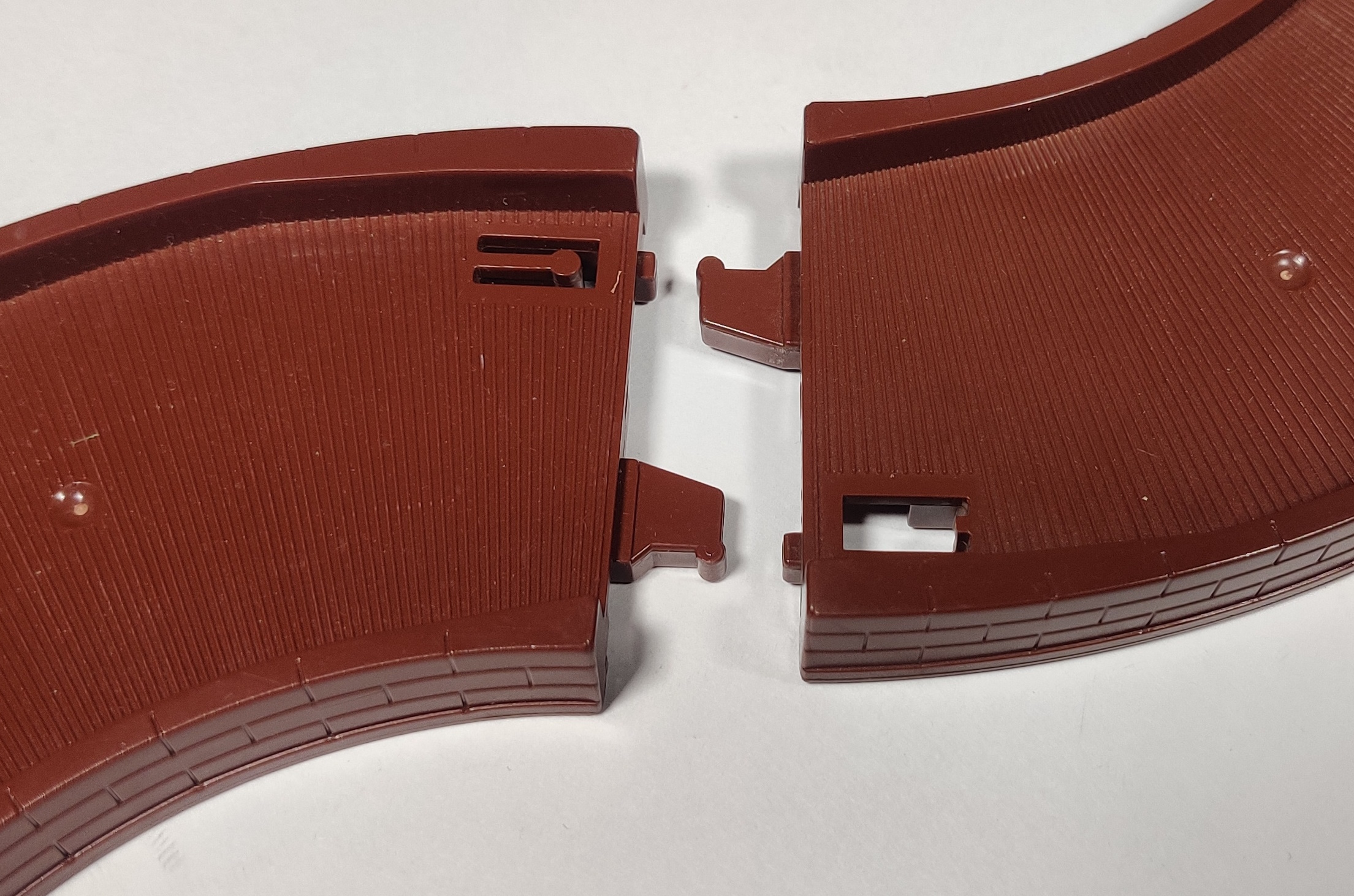fall inside a hole
B/O Tomica/Motor Tomica/Tomica World/Plaroad road
First written May 2024In the mid 1990s Tomy developed battery-powered die-cast and plastic Tomica-style motorized cars that ran on a plastic road system. This series was first called B/O Tomica (B/Oトミカ) (for "Battery/Operated" Tomica) from its introduction around 1993 until the end of 1996 when the name was changed to Motor Tomica (モータートミカ), perhaps because Tomy introduced other battery-powered Tomica cars that did not have motors but rather lights, sounds, or similar features and the naming may have been confusing. Production also shifted from Japan to China around 1996. In 1997 and 1998 Tomy began exporting Motor Tomica as part of the Tomica City and later Tomica World ranges in Europe and North America. When the Plarail range was refreshed in the early 2000s the Motor Tomica range was sold as Plaroad primarily as a companion to Plarail (Tomy had previously used the Plaroad name for their later 1980s Plarail-companion road system).
Motor Tomica road uses a rotationally symmetric clip connection style. Pieces are single-sided with the connection occurring below the road's surface. The underside of road has round rims that fit around the road pier supports.
D-01 Straight Road (D-01 直線どうろ) (1993)
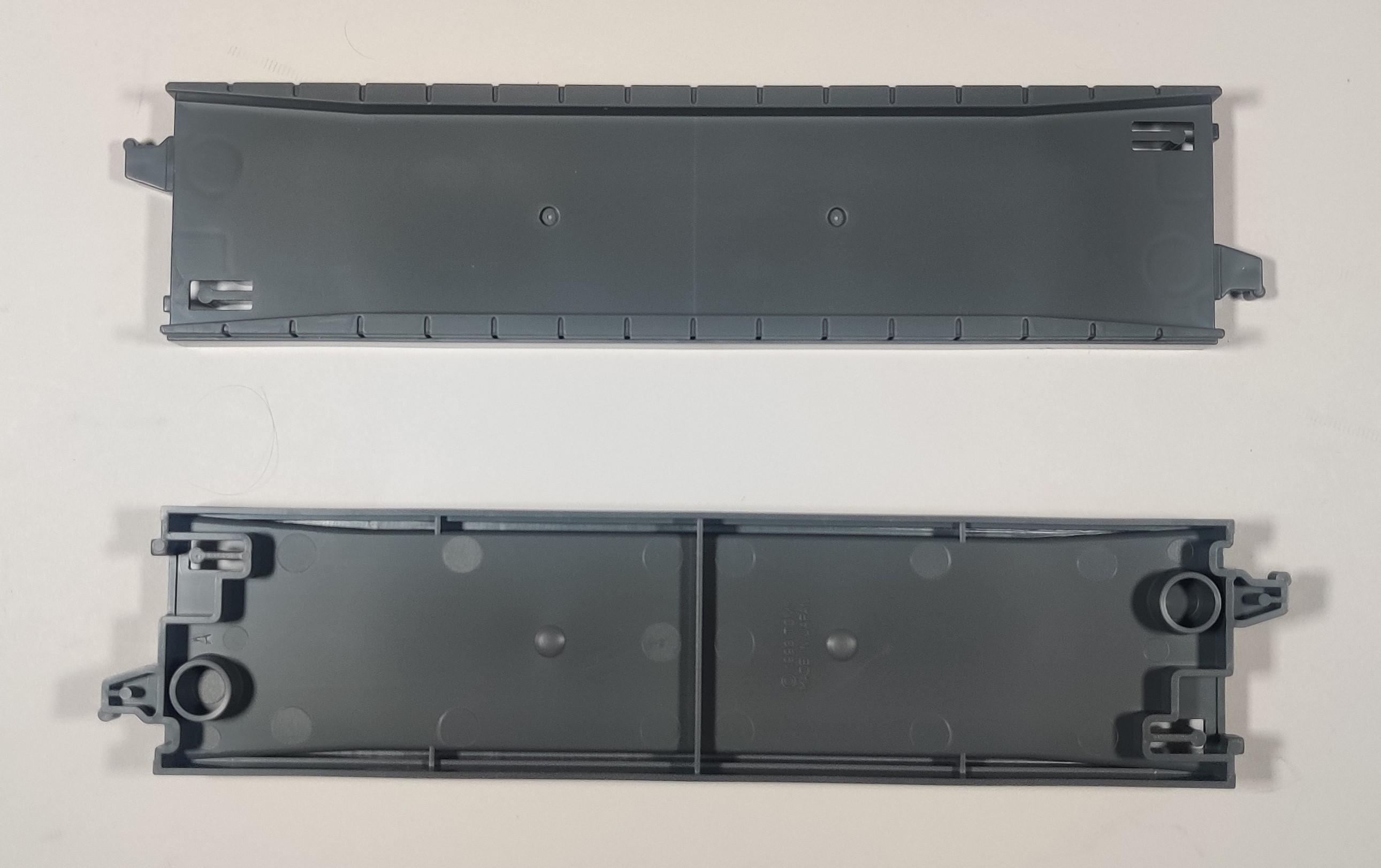
Standard Motor Tomica road was sold in packs of four for 500 yen. Straight roads are approximately 215mm, coinciding with Plarail straight rail so that the two systems can be used together. The normal flat road pieces are primarily smooth with no intentional tread to the surface, relying on the perfectly fine traction of the little rubber drive tires to propel the cars properly.
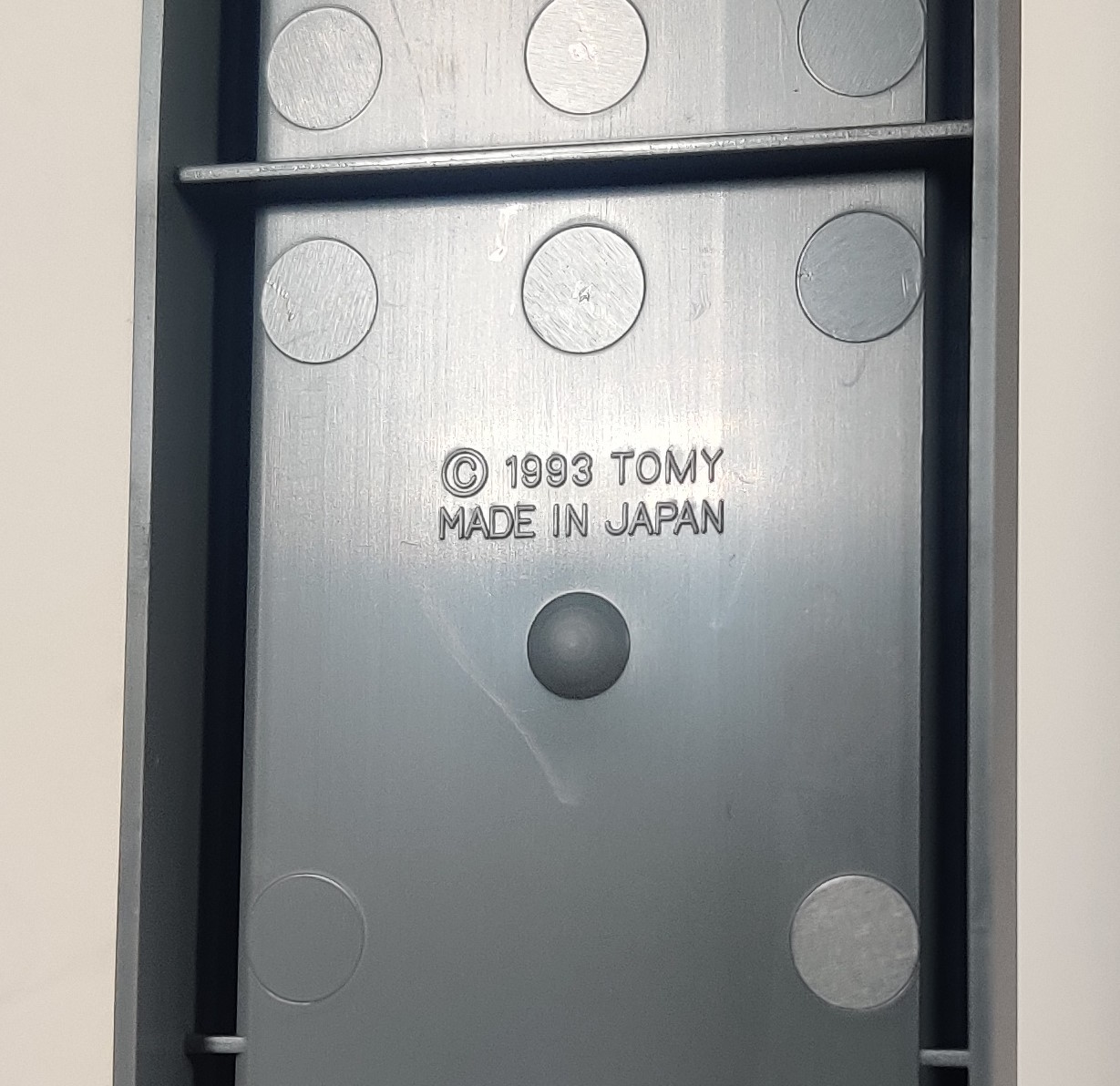
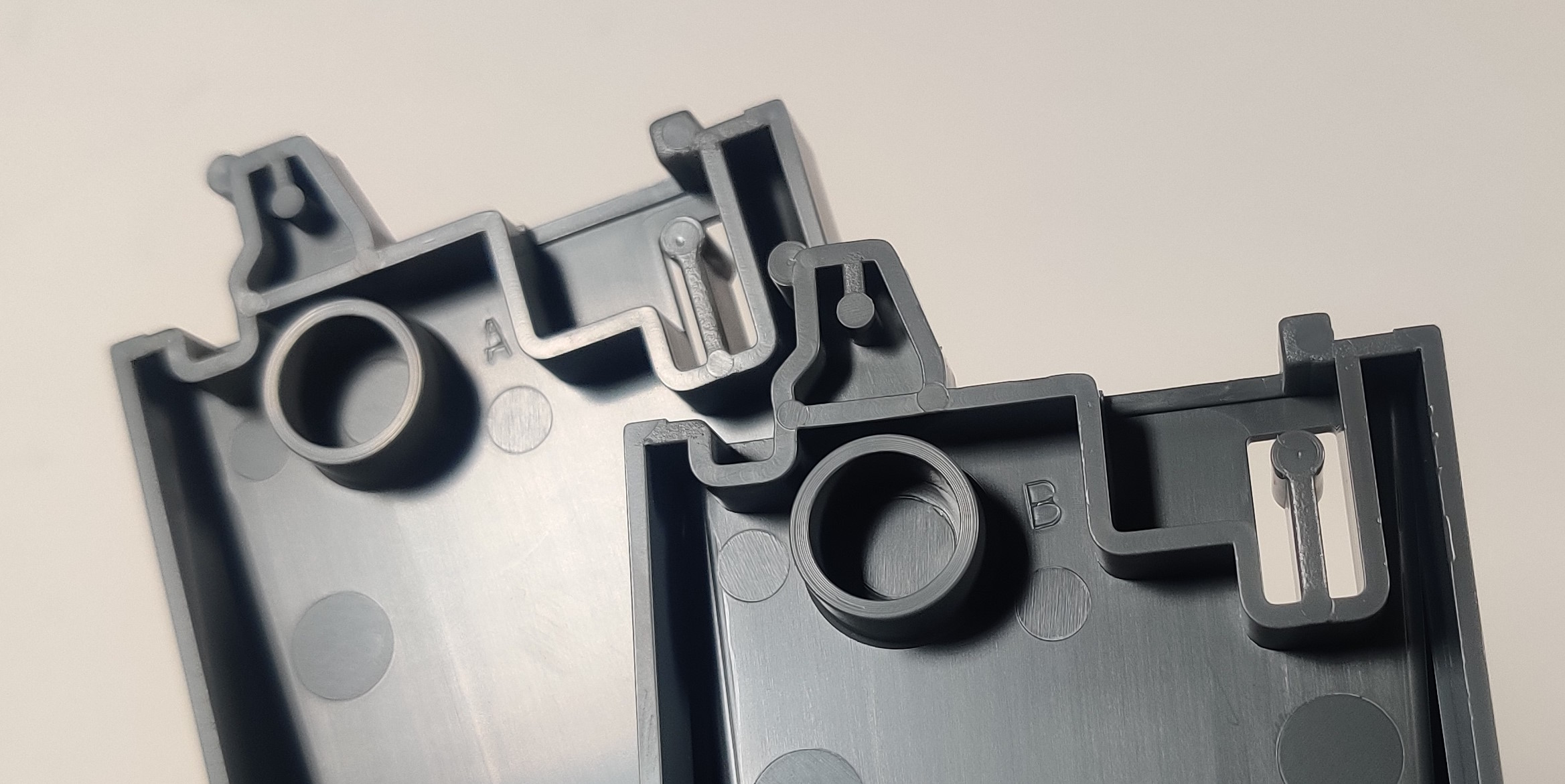
Early examples from B/O Tomica's introduction to around 1996 were made in Japan. Slot letter marks are present near the connectors.
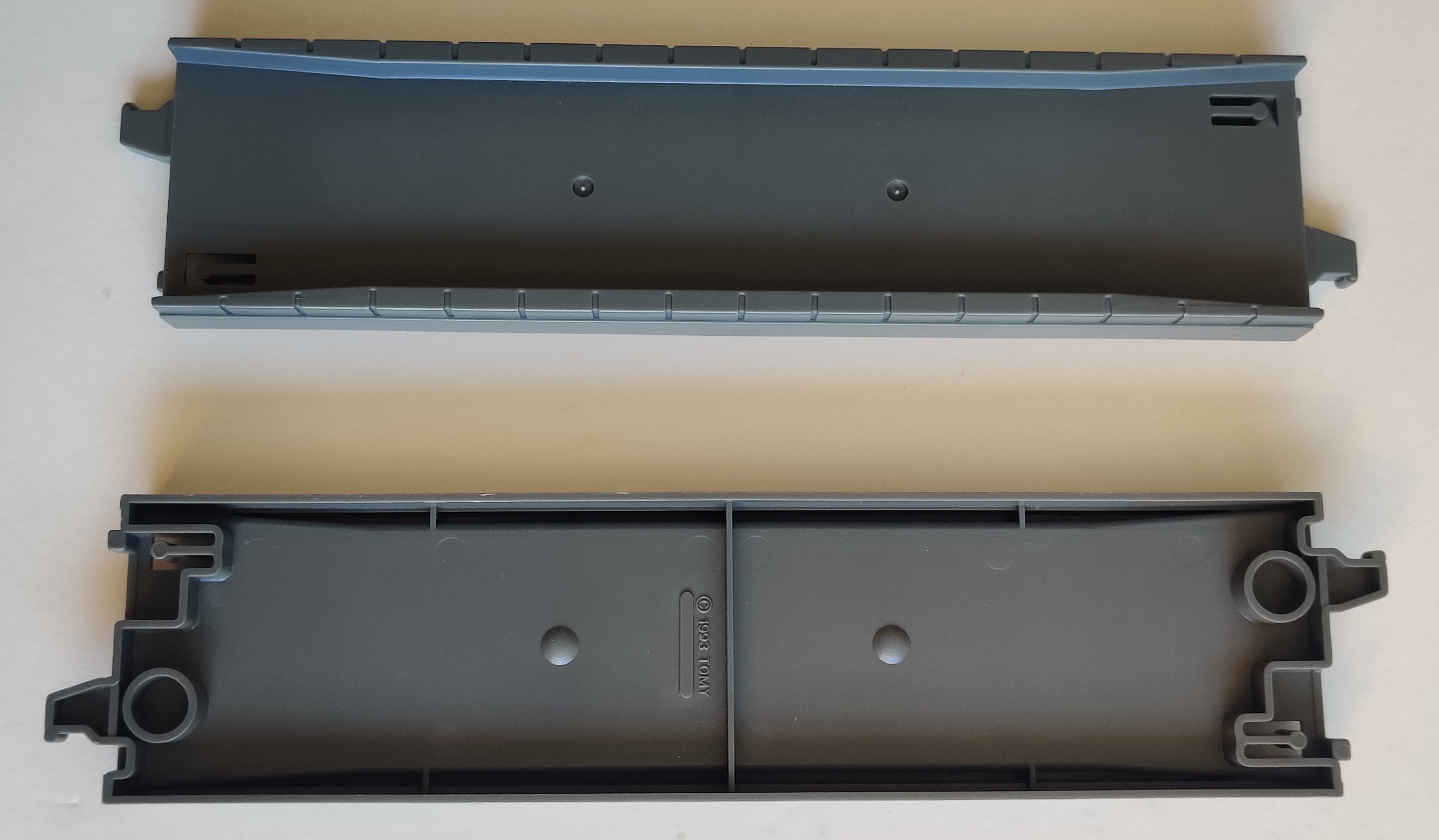
In 1997 production of most Motor Tomica road moved to Thailand. This road appears to be from a new set of toolings, with the text in a slightly different place and some other changes to the underside structure. Interestingly, this tooling has what appears to be a machined-out region of manufacture mark.
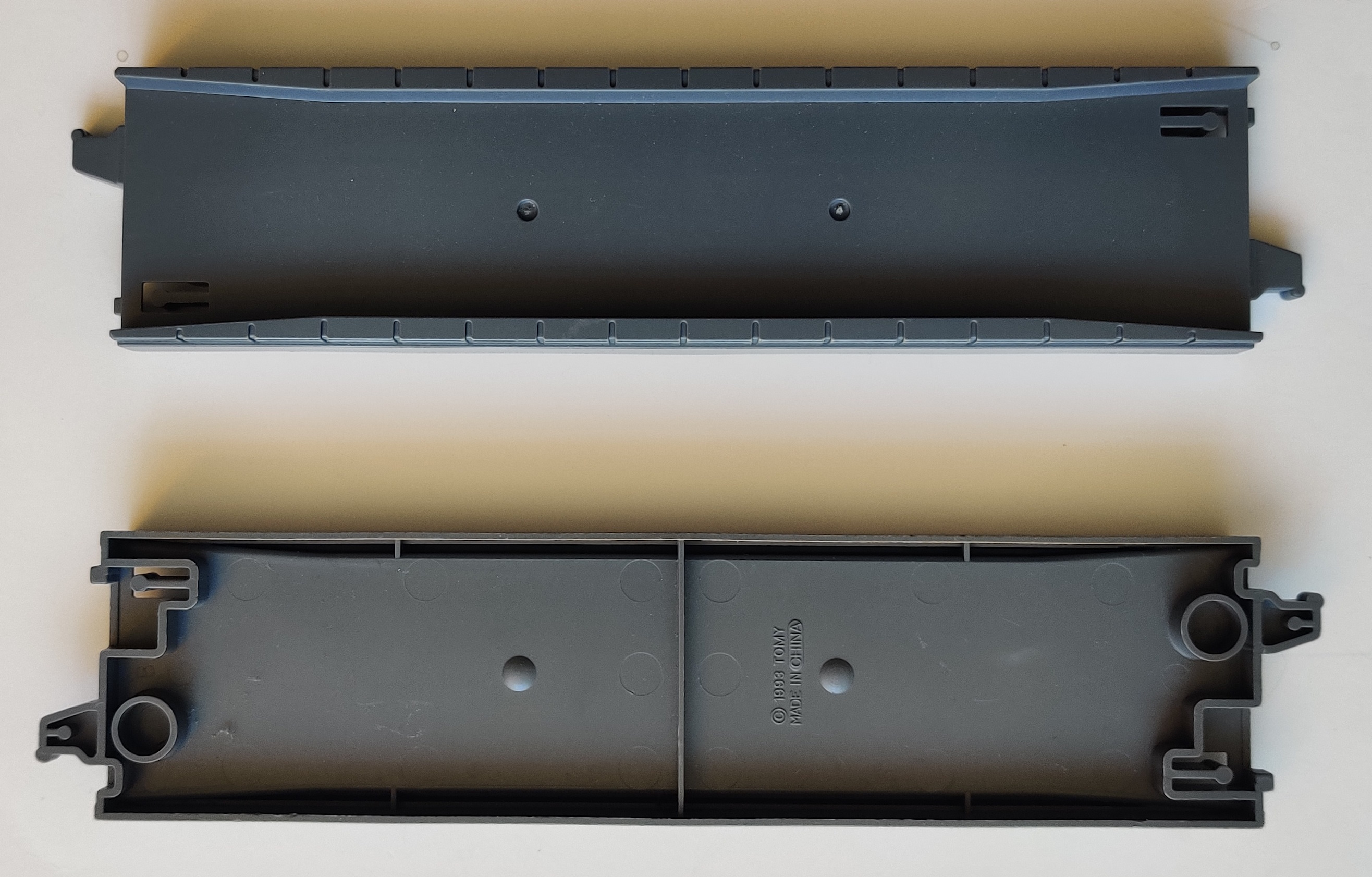
Around 2002 production of Motor Tomica road moved again from Thailand to China. This set of molds appears to be the old 1993 Japan molds with China machined into the tooling over where it originally said Japan. Regular Japanese Motor Tomica production stopped around 2003 before being replaced by the lighter Plaroad version in 2004, but it was still produced in darker grey for export Thomas Motor Road & Rail sets into the mid 2000s.
7510 Straight Road (Tomica World) (1998)
In 1998 as part of the Tomica World range four-packs of straight road were released in Tomica World boxes. Early individual and set releases used Thailand-made marked-out straight road while later U.K. Tomica World branded sets from 2002 and 2003 use China made road.
Later Motor Road & Rail sets used the tooling with new Tomy logo.
D-01 Straight Road (D-01 直線どうろ) (2004)
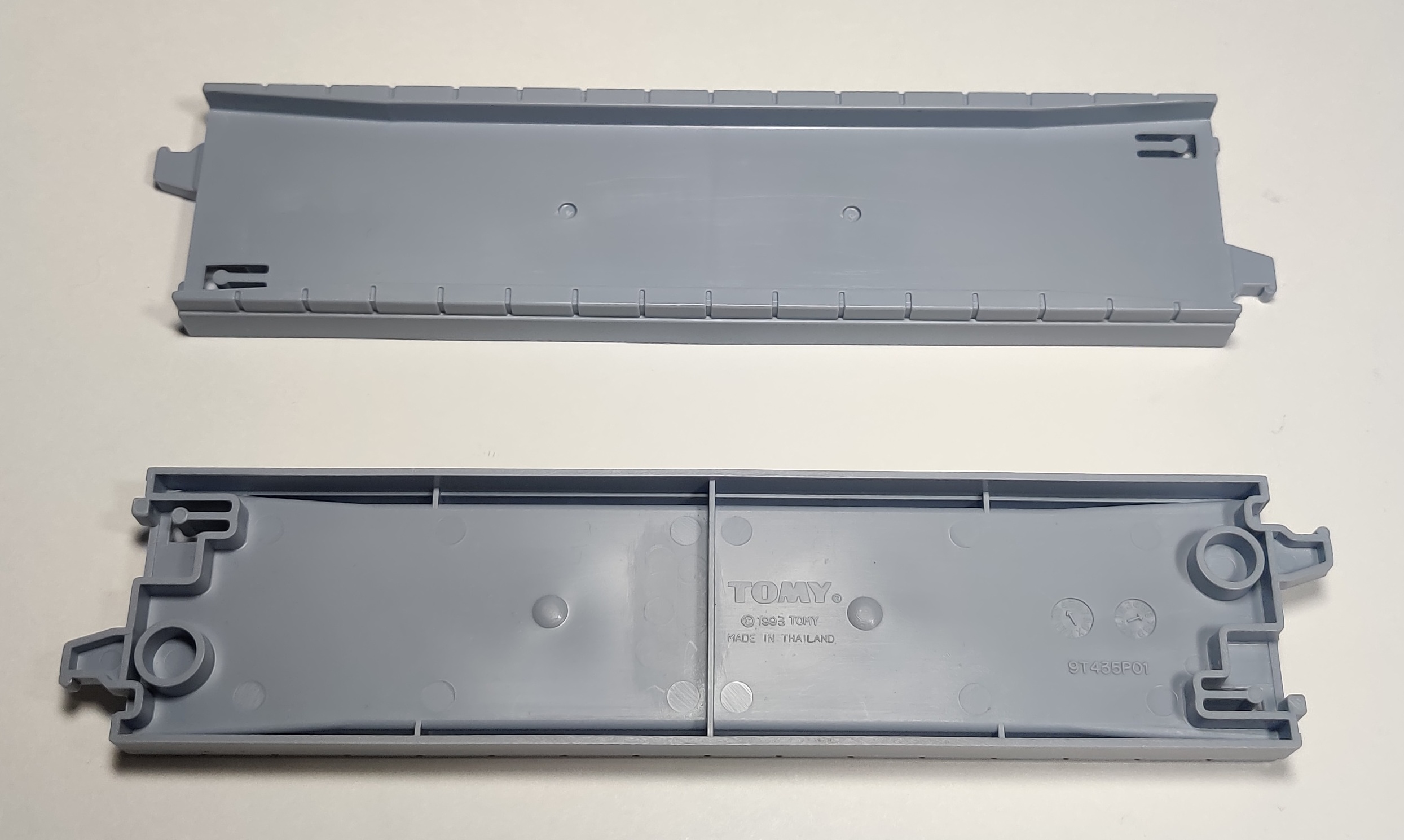
Four packs of light grey straight road were released in 2004 for the relaunched Plaroad series.
D-02 1/2 Straight Road (D-02 1/2直線どうろ) (1993)
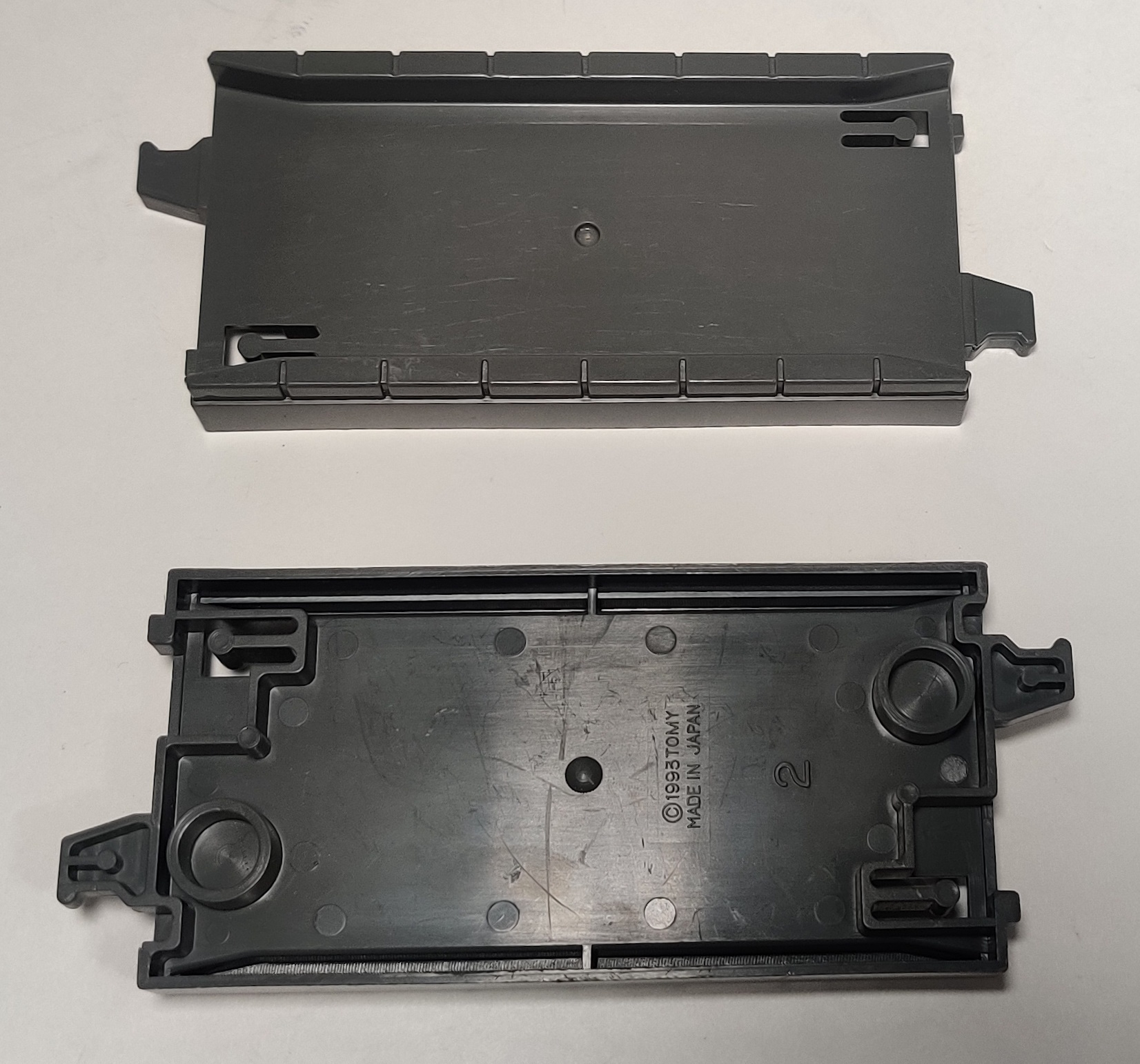
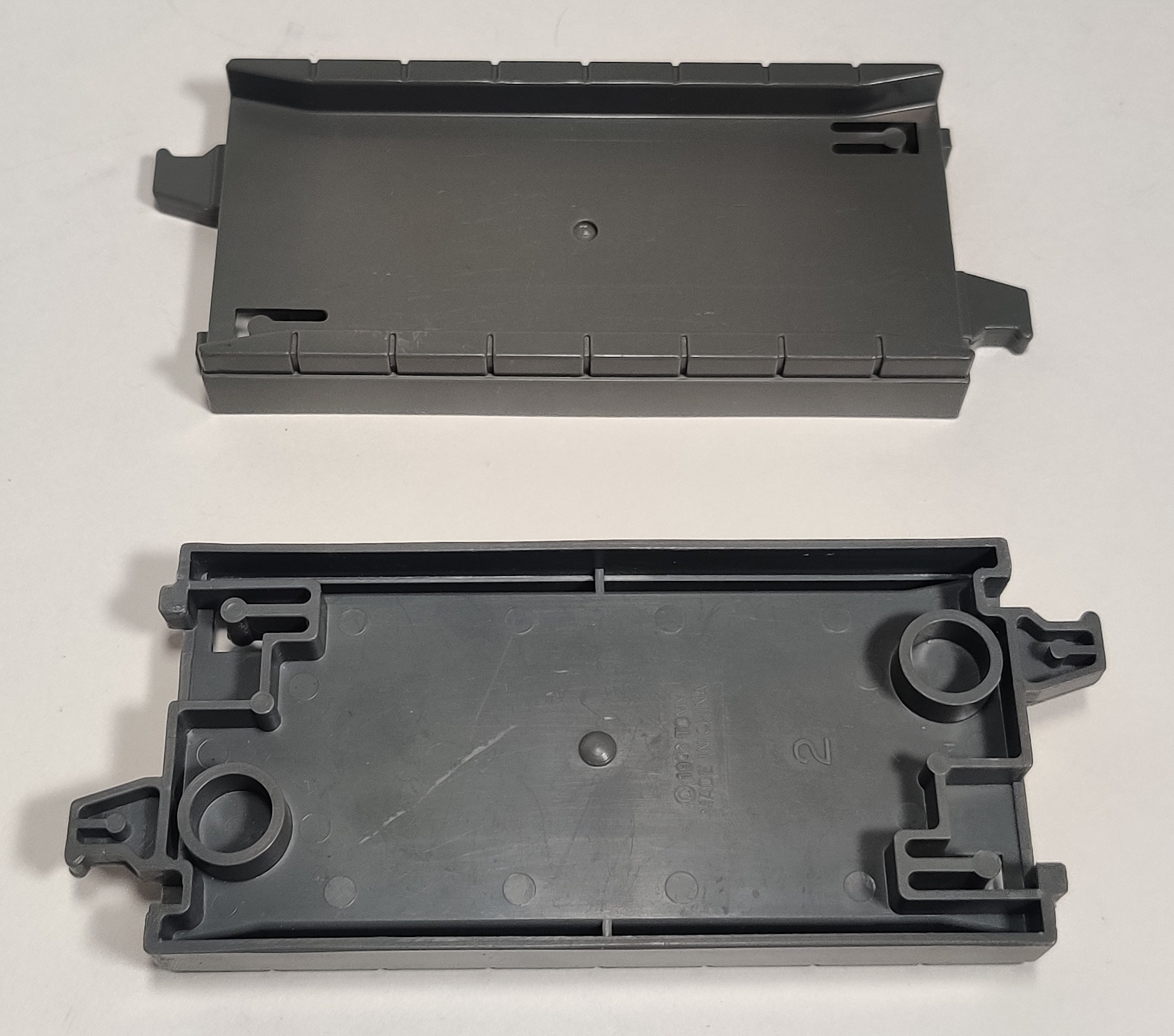
Half length Motor Tomica road was sold in packs of six for 500 yen. Like other road, it was first produced in Japan and then later China. These rails measure about 106mm long, half the normal straight and the same as the radius of the Motor Tomica curve, aligning the two together geometrically.
7511 Half Straight Road (Tomica World) (1998)
In 1998 as part of the Tomica World range six-packs of China-made straight rails were released in Tomica World boxes.
D-02 1/2 Straight Road (D-02 1/2直線どうろ) (2004)
Six half straight roads were released in Plaroad light grey in 2004.
D-03 Curve Road (D-03 カーブどうろ) (1993)
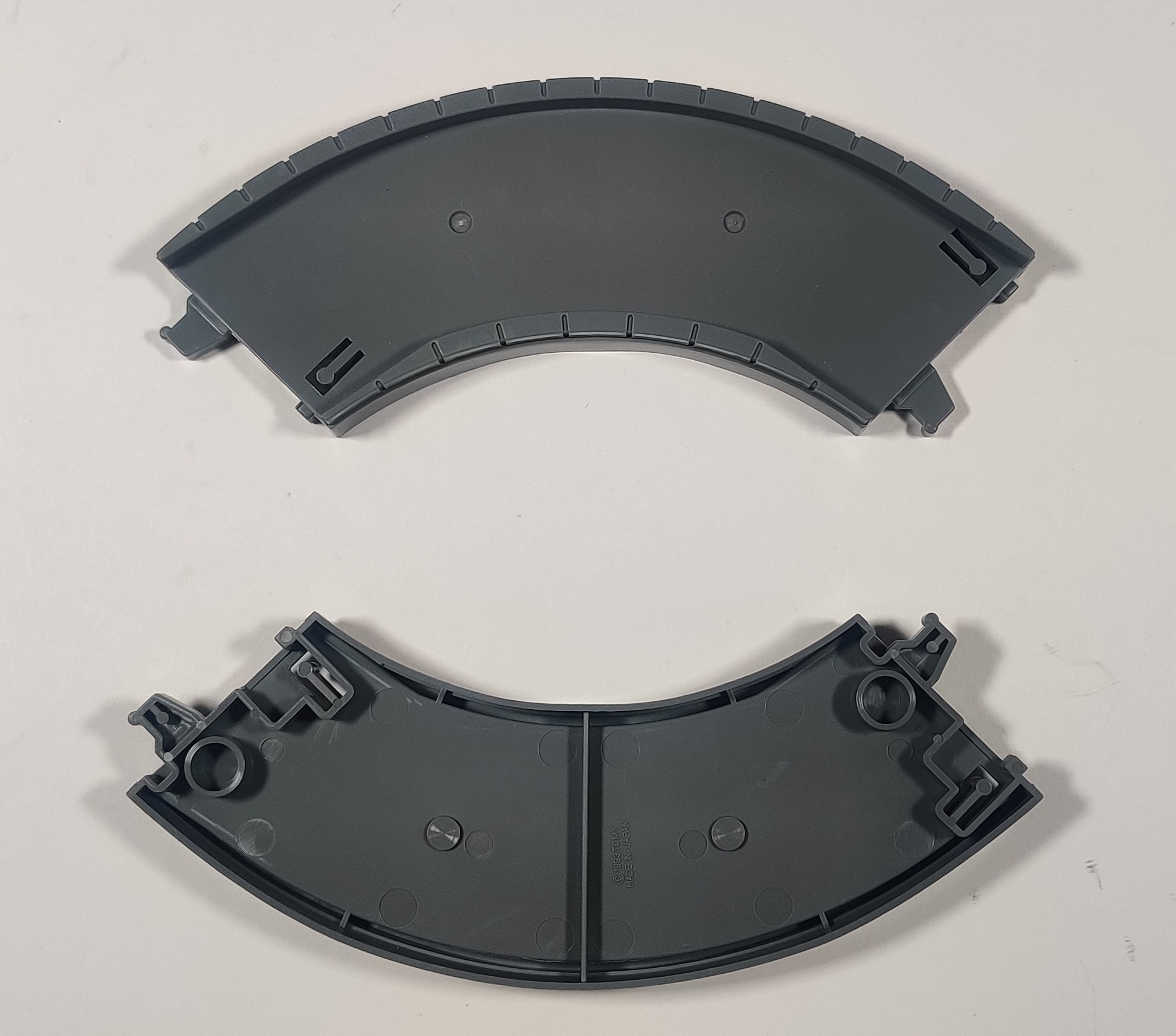
Normal Motor Tomica curves were only produced in 90 degree four-to-a-curve. The four curves included in the individual release can therefore make up a complete circle on their own. The radius is ~106mm, which allows a circle of road to easily fit inside a circle of rail or road straights to be used to make a square of road larger than the circle, as well as any number of variety of other combinations.
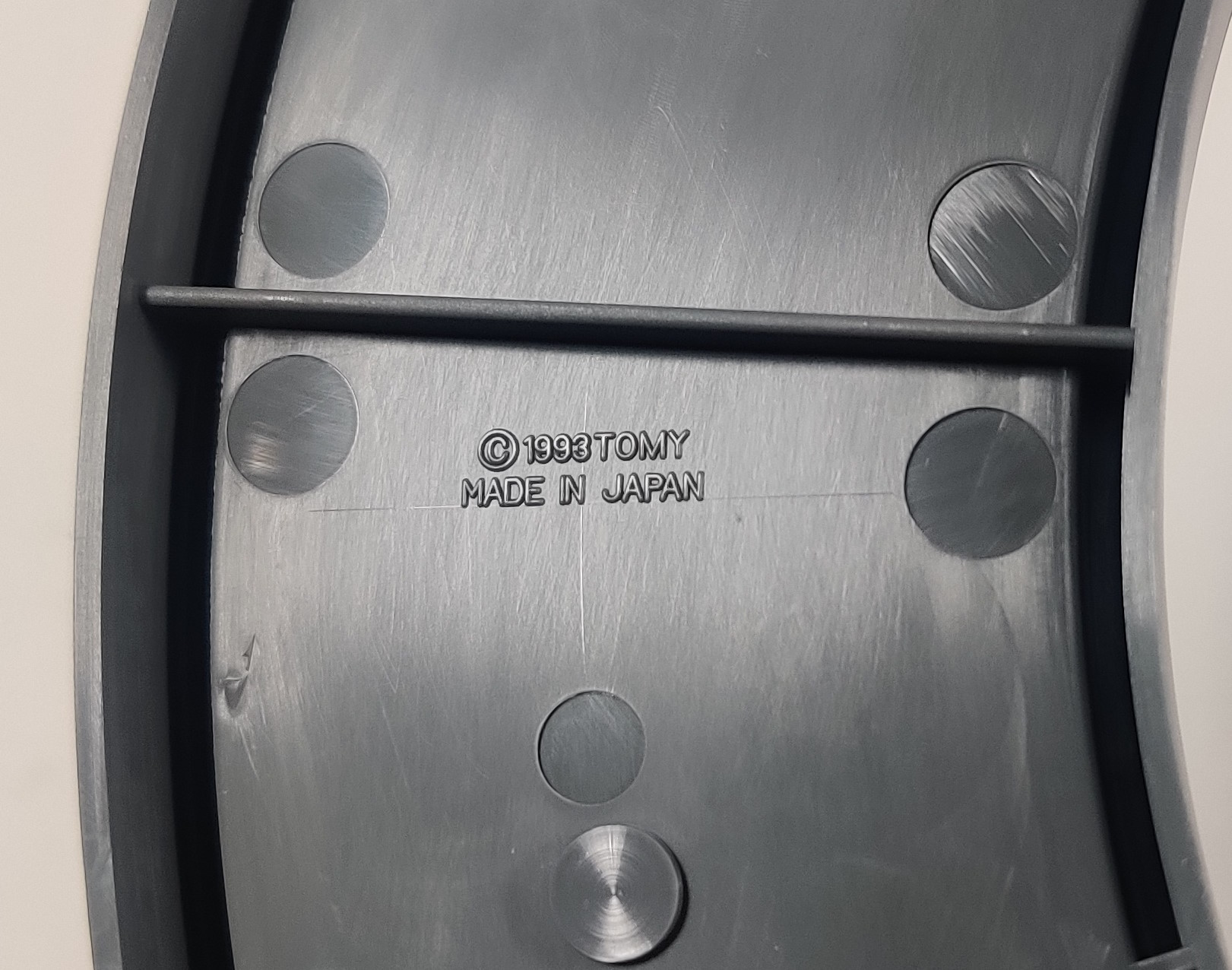
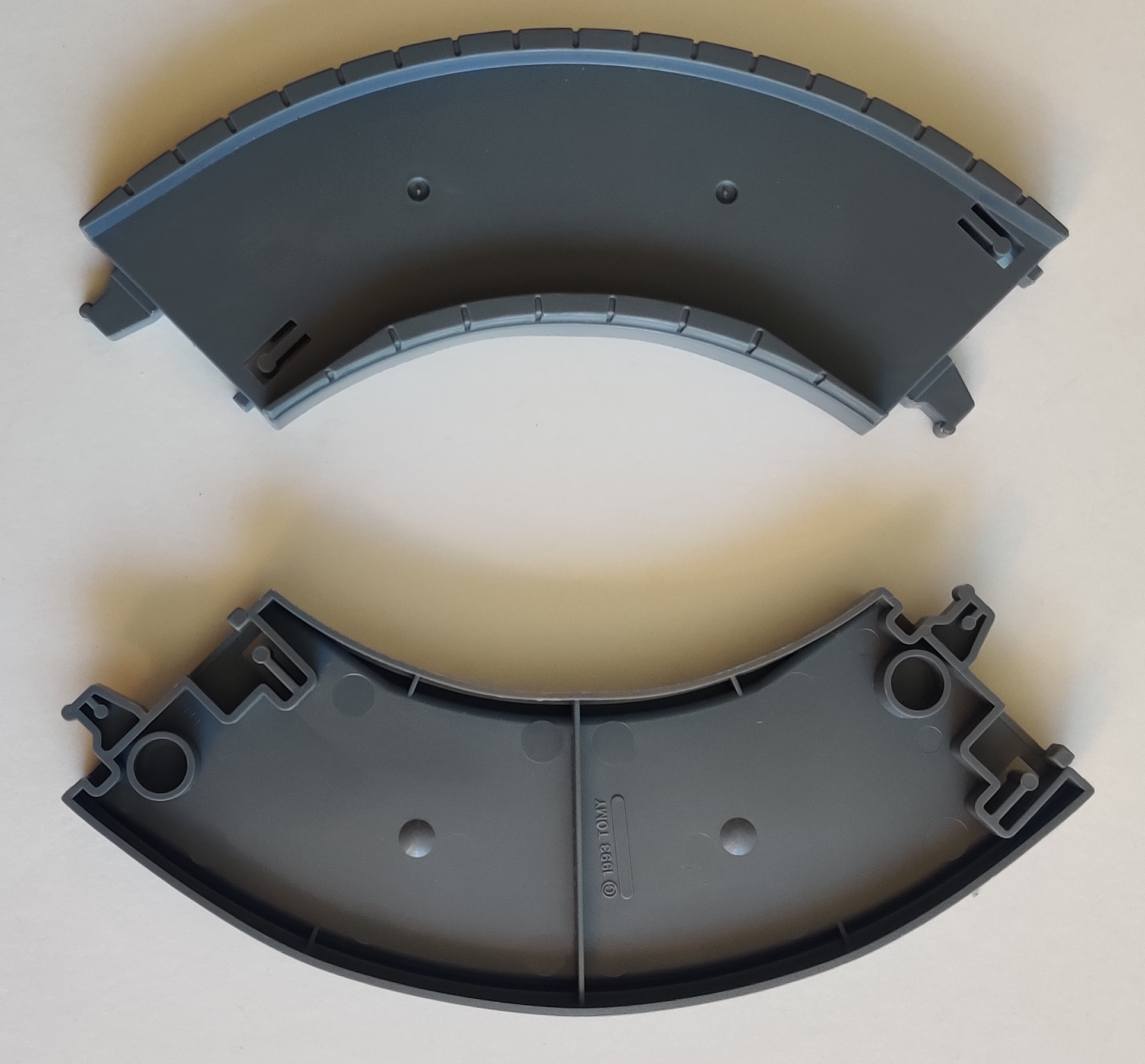
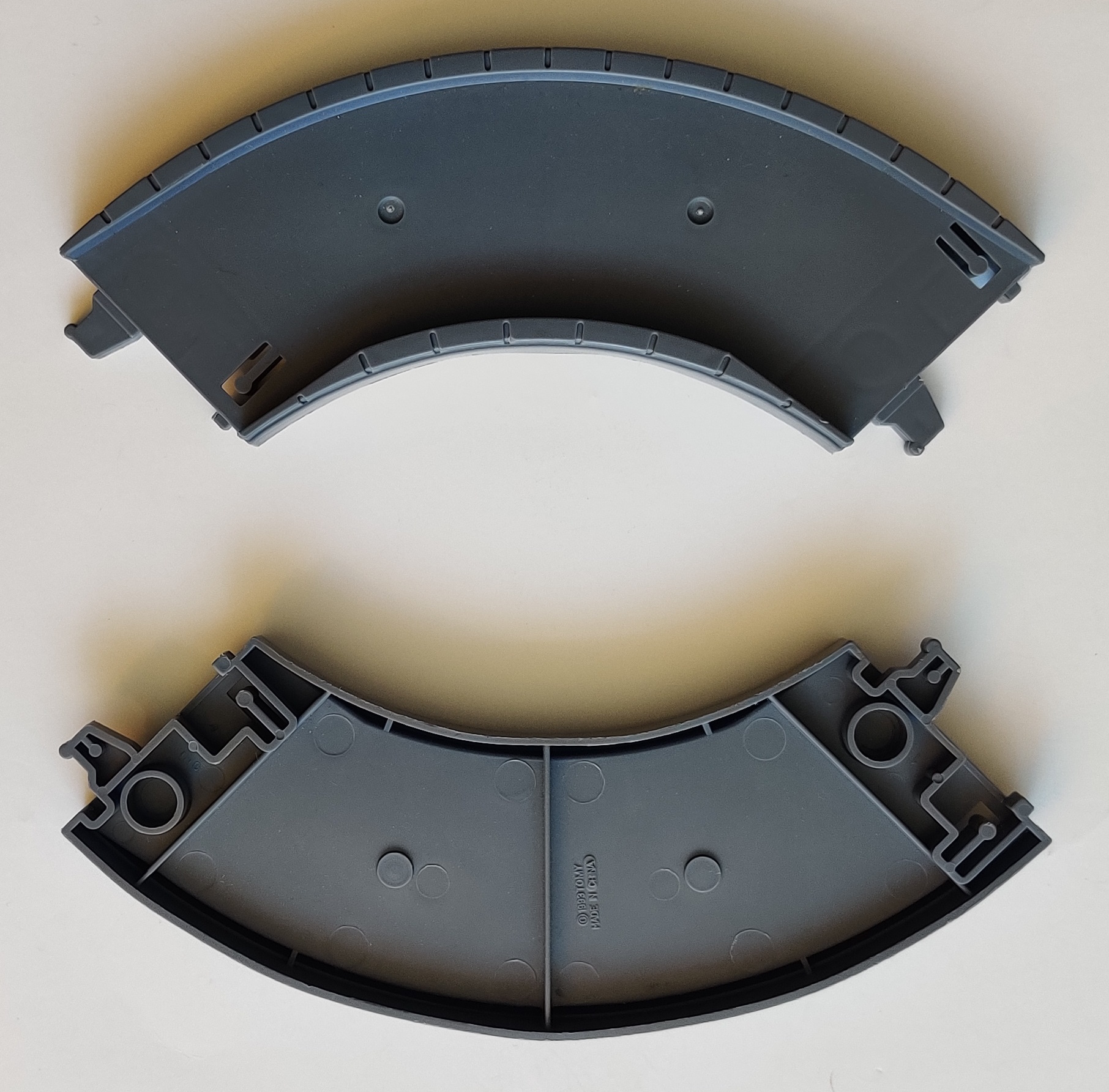
Like other road pieces, initial production took place in Japan. Thailand production curves from 1997 to 2001 or so have more rounded bottom bumps and no manufacture mark, although there is a marked-out area for one. This is apparently a fresh tool, as the 1993 Tomy text is different. When production moved to China in 2002, the old Japan tooling with flat cylindrical protrusions on the bottom and closer 1993 Tomy text was updated to say China.
7513 Curve Road (Tomica World) (1998)
In 1998 as part of the Tomica World range four-packs of curve rails were released in Tomica World boxes. Early individual and set releases used Thailand-made marked-out straight road while later U.K. Tomica World branded sets from 2002 and 2003 use China made road.
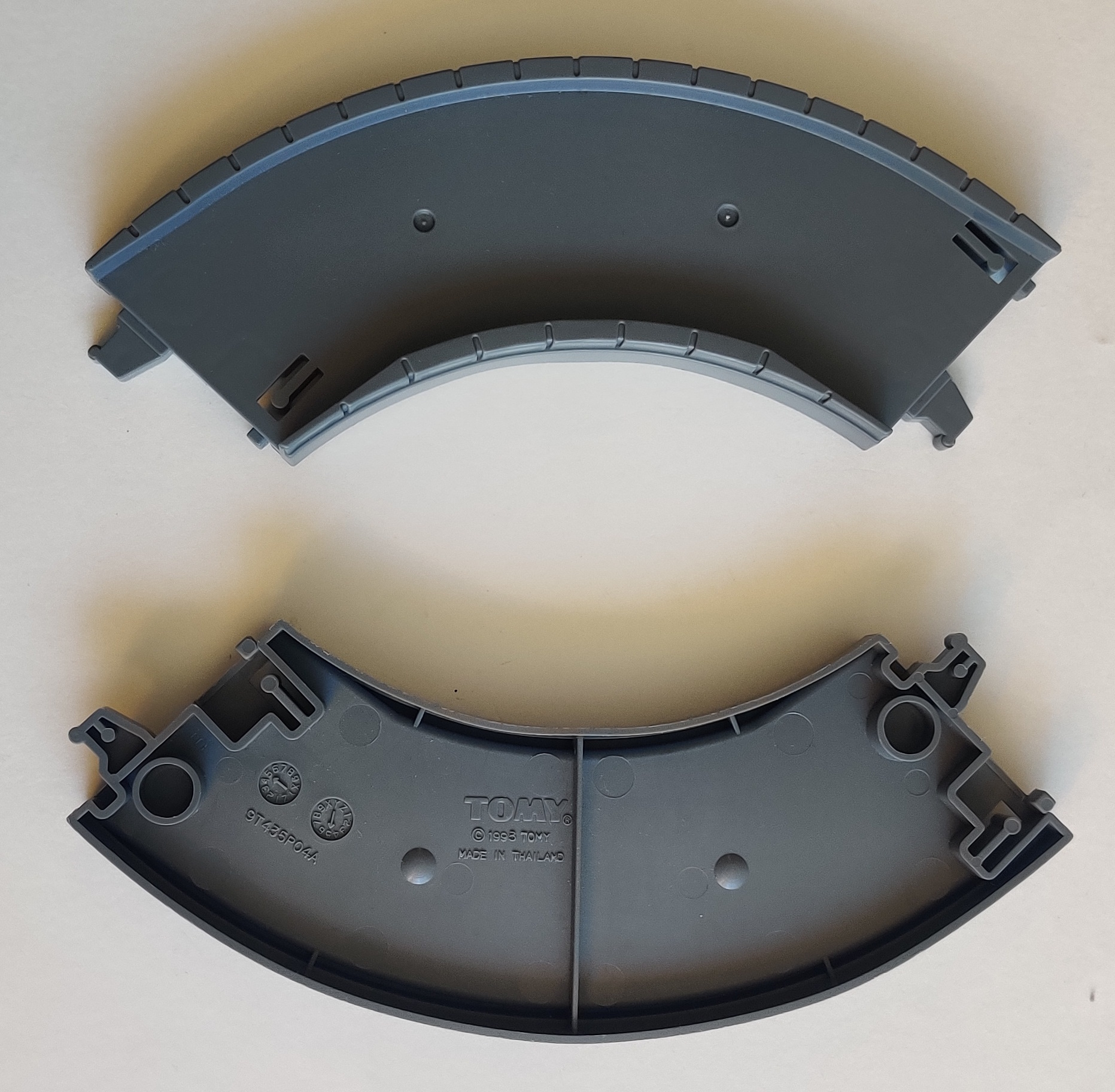
Later Motor Road & Rail sets used the tooling with new Tomy logo used for the renewed Plaroad range and was produced in Thailand. In fact, this set of toolings appears to be descended from the earlier Thailand road with the rounded bumps underneath.
D-03 Curve Road (D-03 曲線どうろ) (2004)
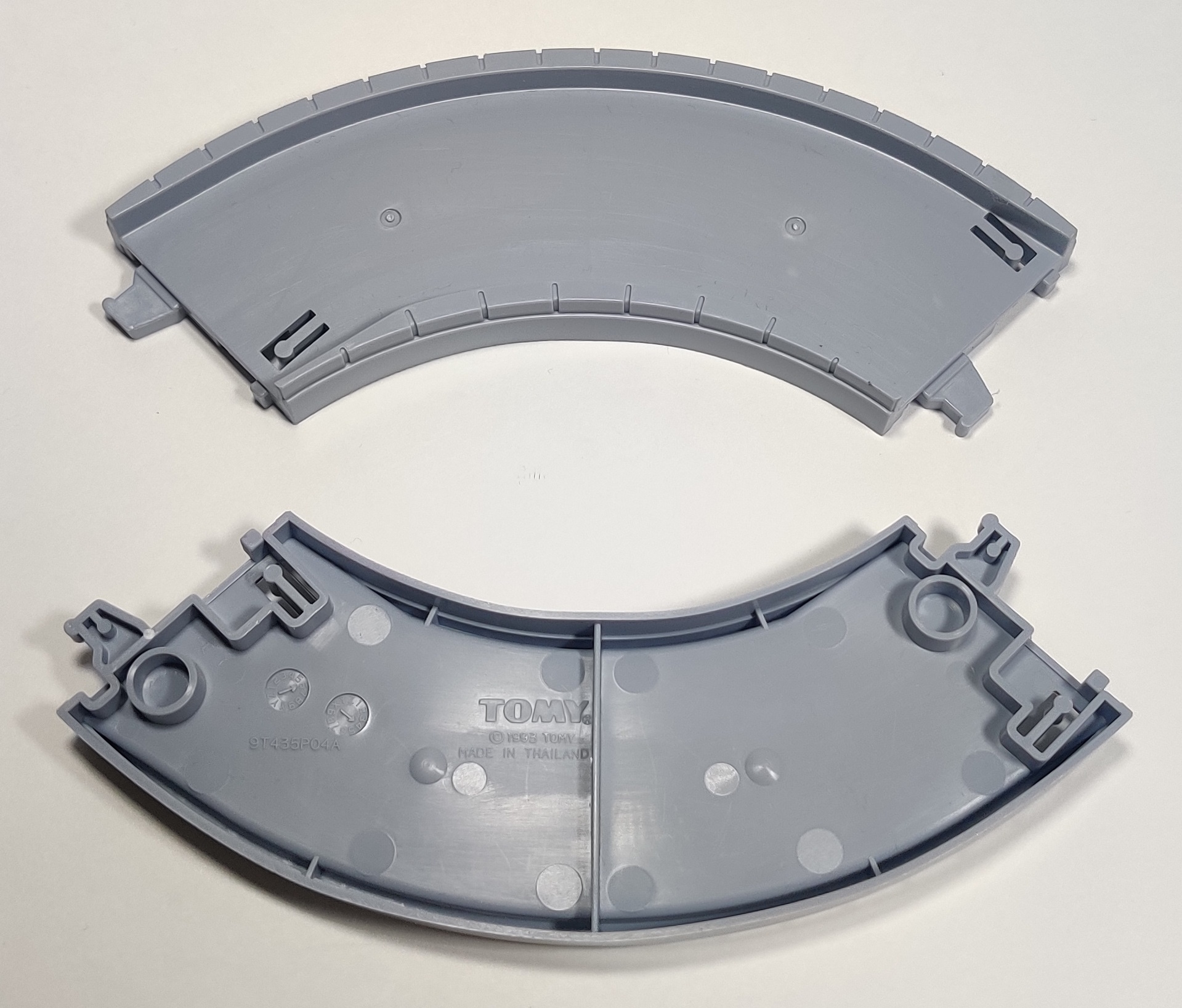
Four packs of light grey curved road were released in 2004 for the revamped Plaroad system in Japan.
D-04 Intersection (D-04 交差点) (1993)
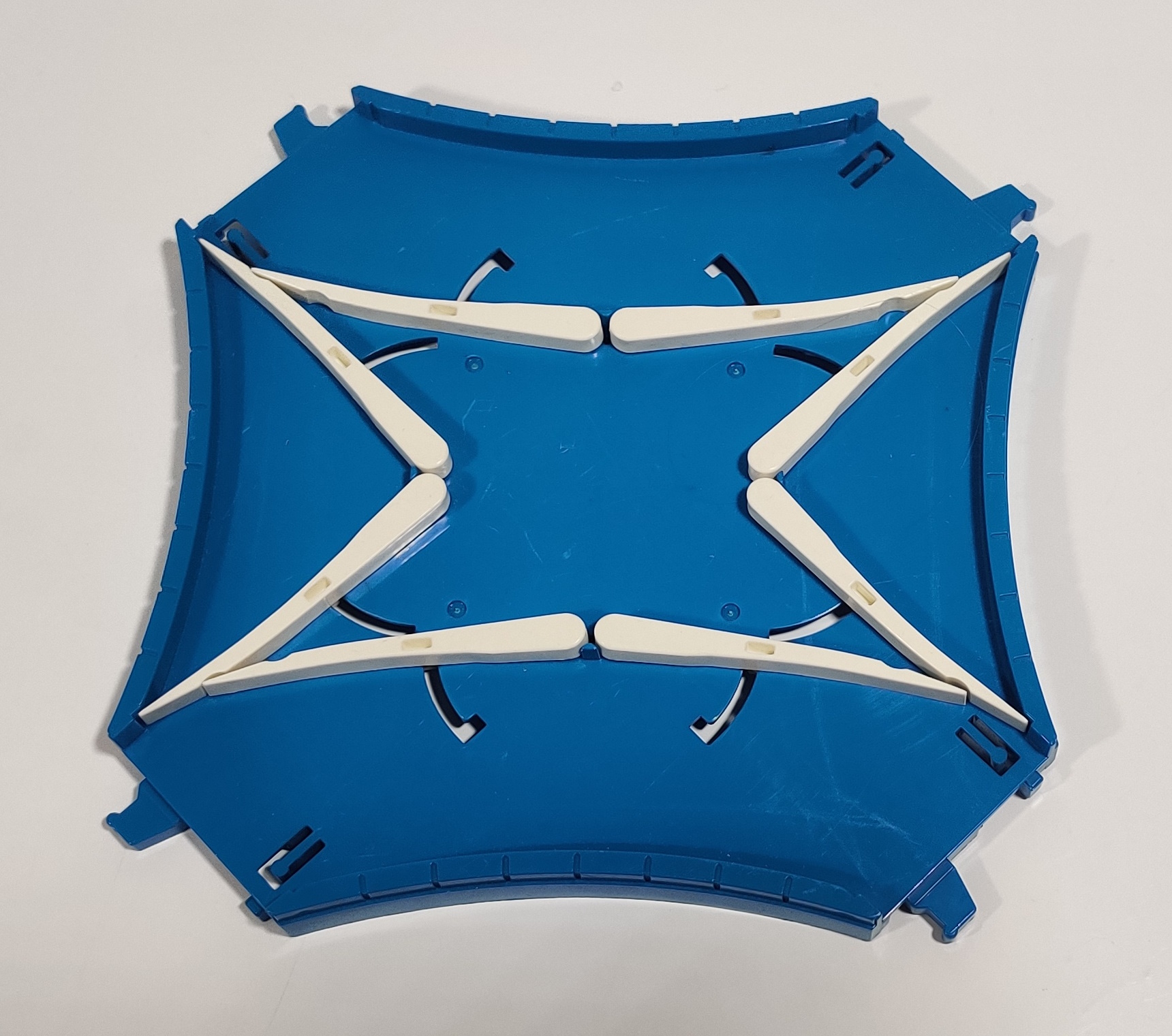
A neat four-way intersection with moveable white "gates" to direct traffic flow.
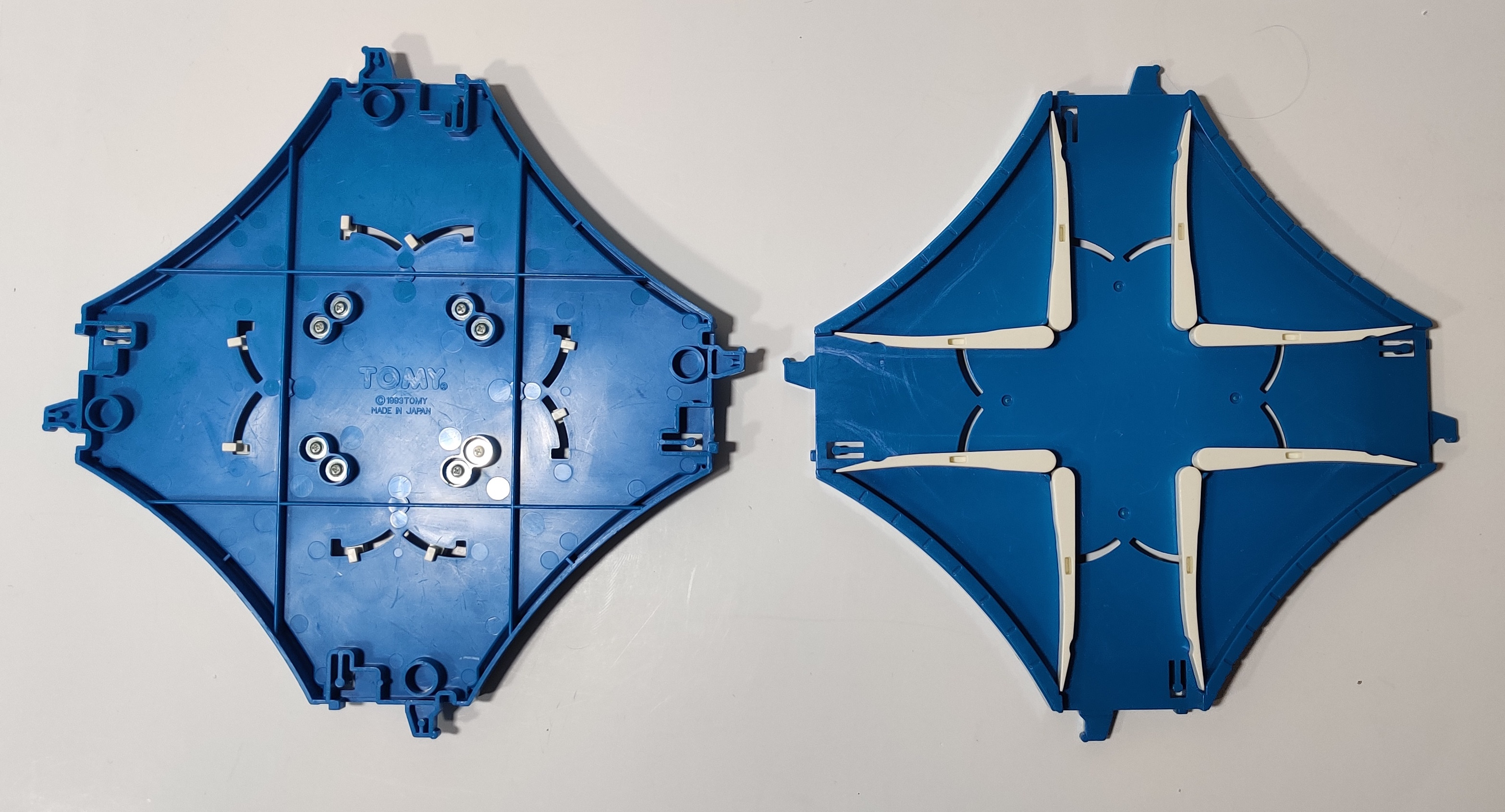
You can make the two roads cross over one another or make two adjacent pairs of roads connect and run multiple cars around at the same time. If a car encounters a gate set against it, it will nudge it out of the way to continue forward. The relationship between the radius of the curves and the length of the straight means this system works perfectly for creating city blocks and other road networks.
7520 Crossroads (Tomica World) (1998)
The four-way intersection was also released as part of the Tomica World range in 1998.
D-08 Intersection (D-08 交差点) (2004/2005)
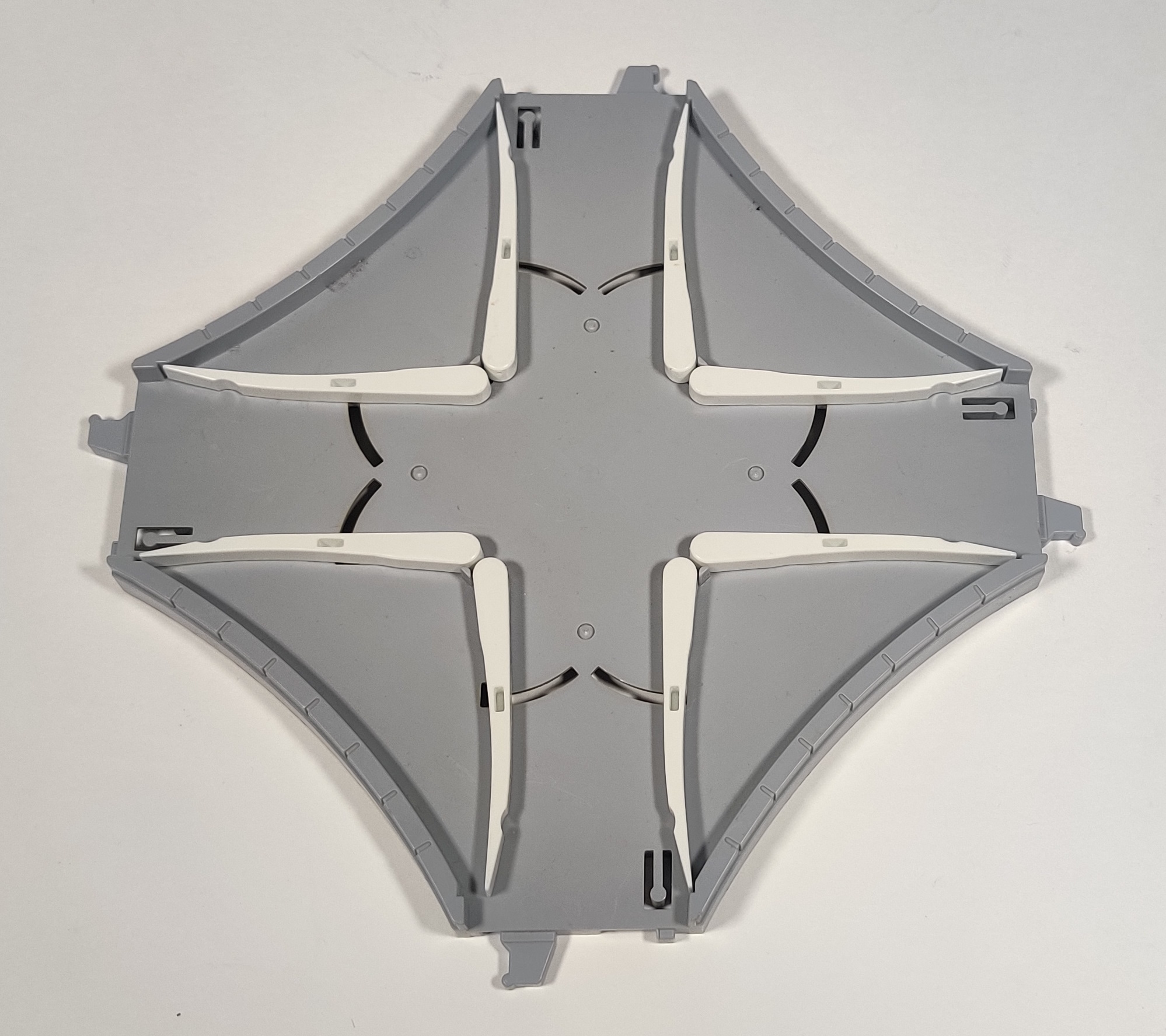
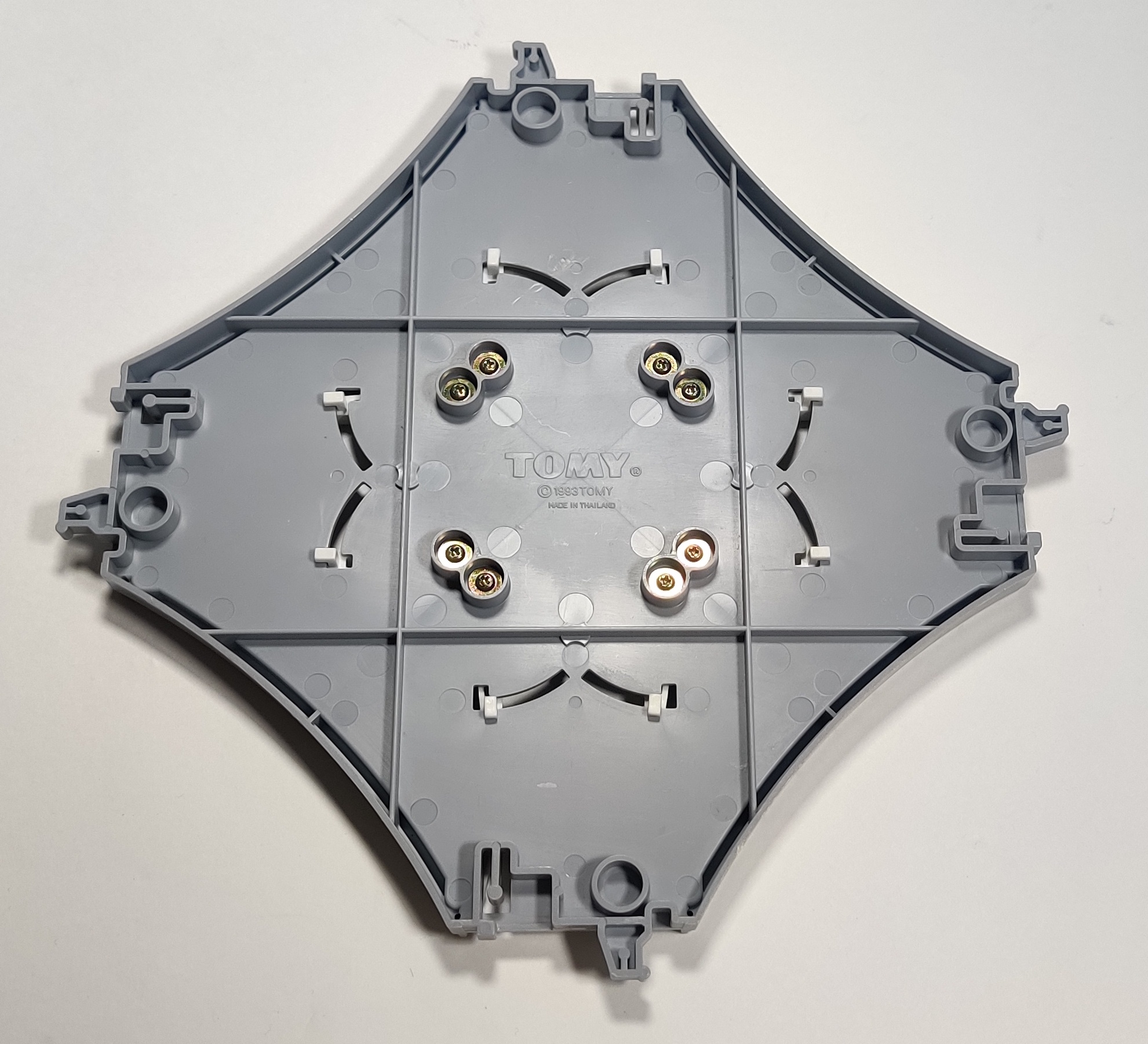
In 2005 the four-way intersection was rereleased individually under the new D-08 number in Plaroad light grey, having previously been included in some sets in 2004.
D-05 T Road with Ramp (D-05 T字路 (エンドロード)) (1993)
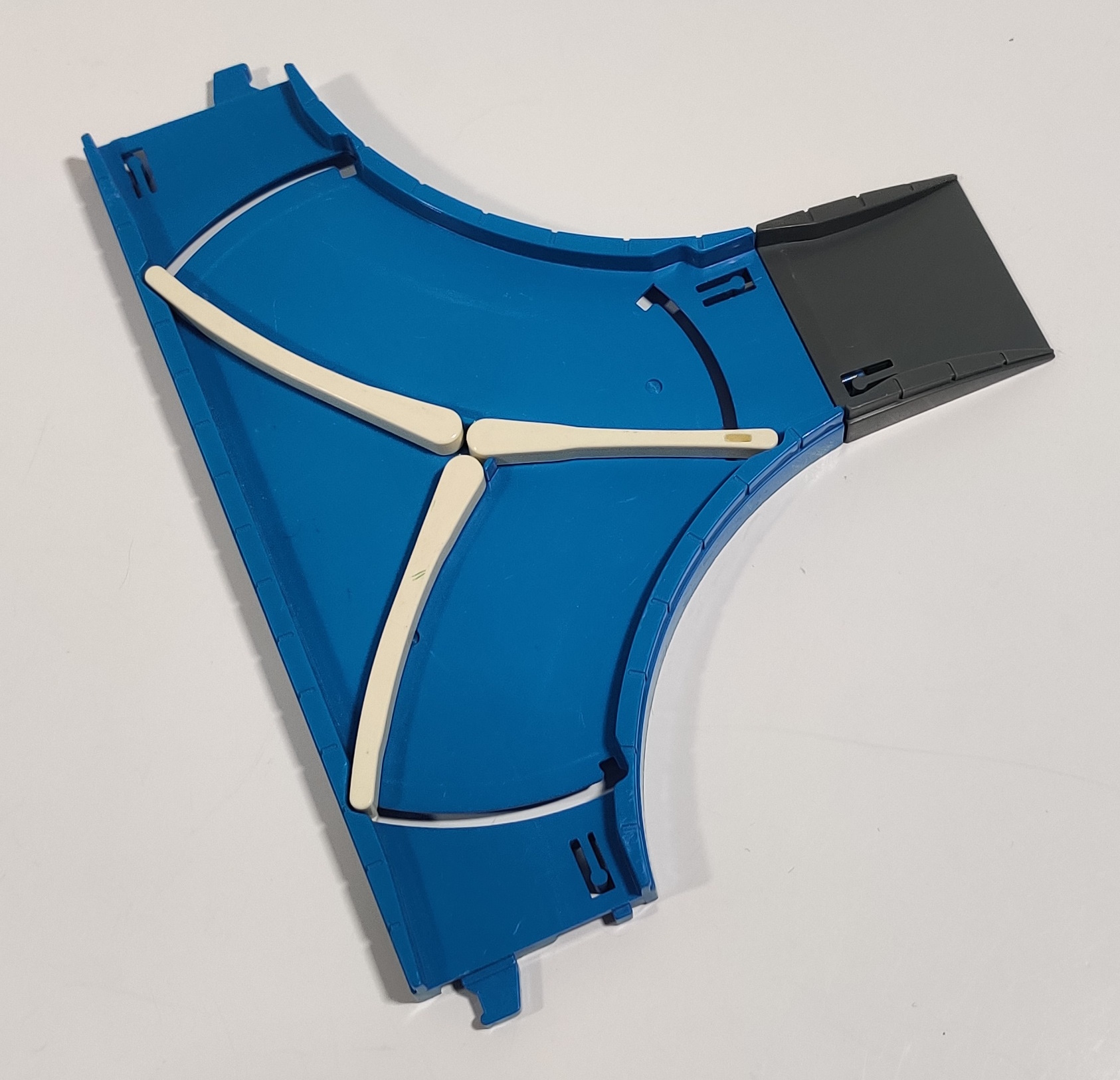
Similar to the four-way intersection are these three-way intersections which were sold individually with a single road ramp, allowing it to immediately be added to an existing road network even without a second switch. Of course, it is much more fun in a larger setup.
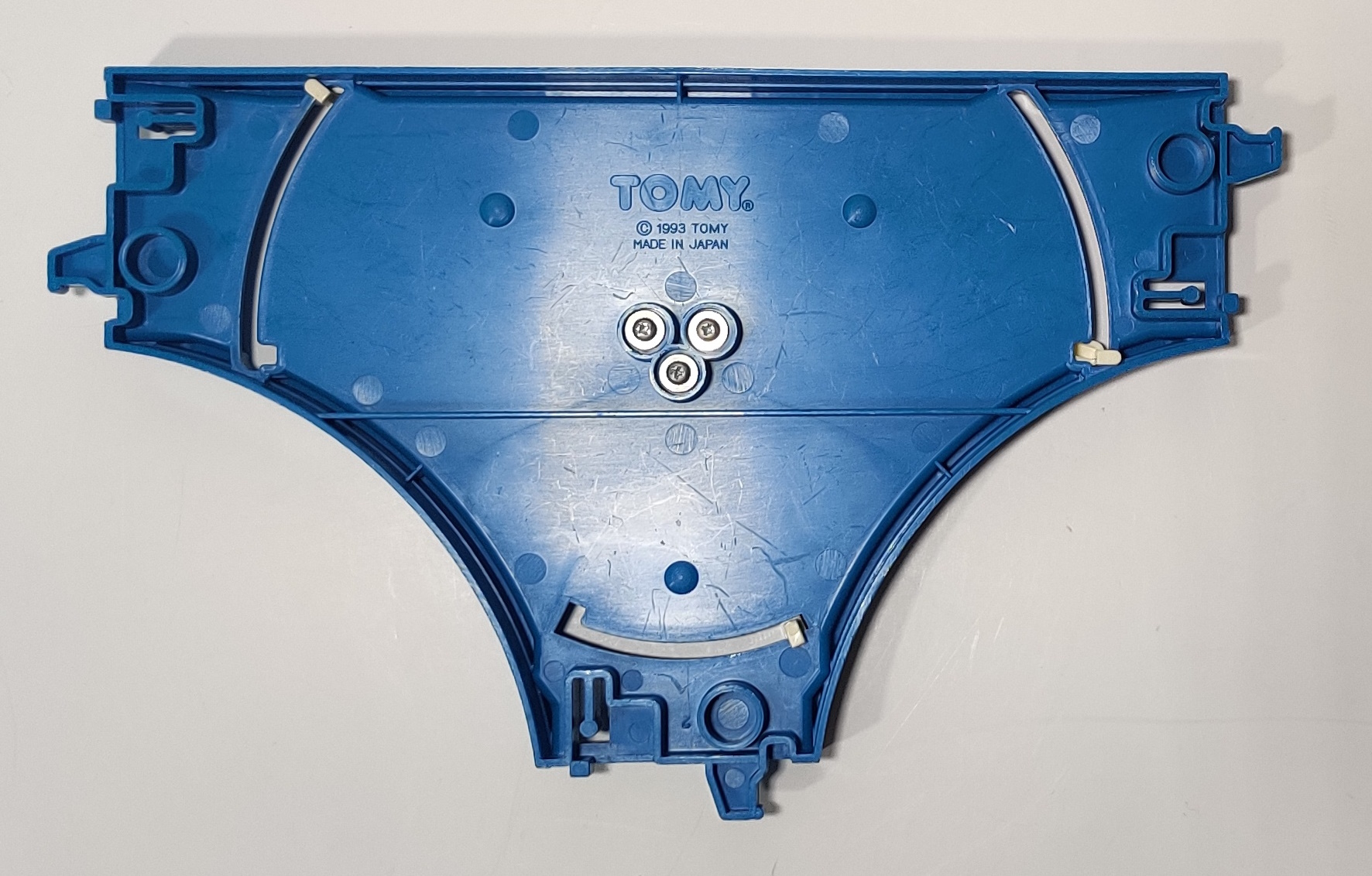
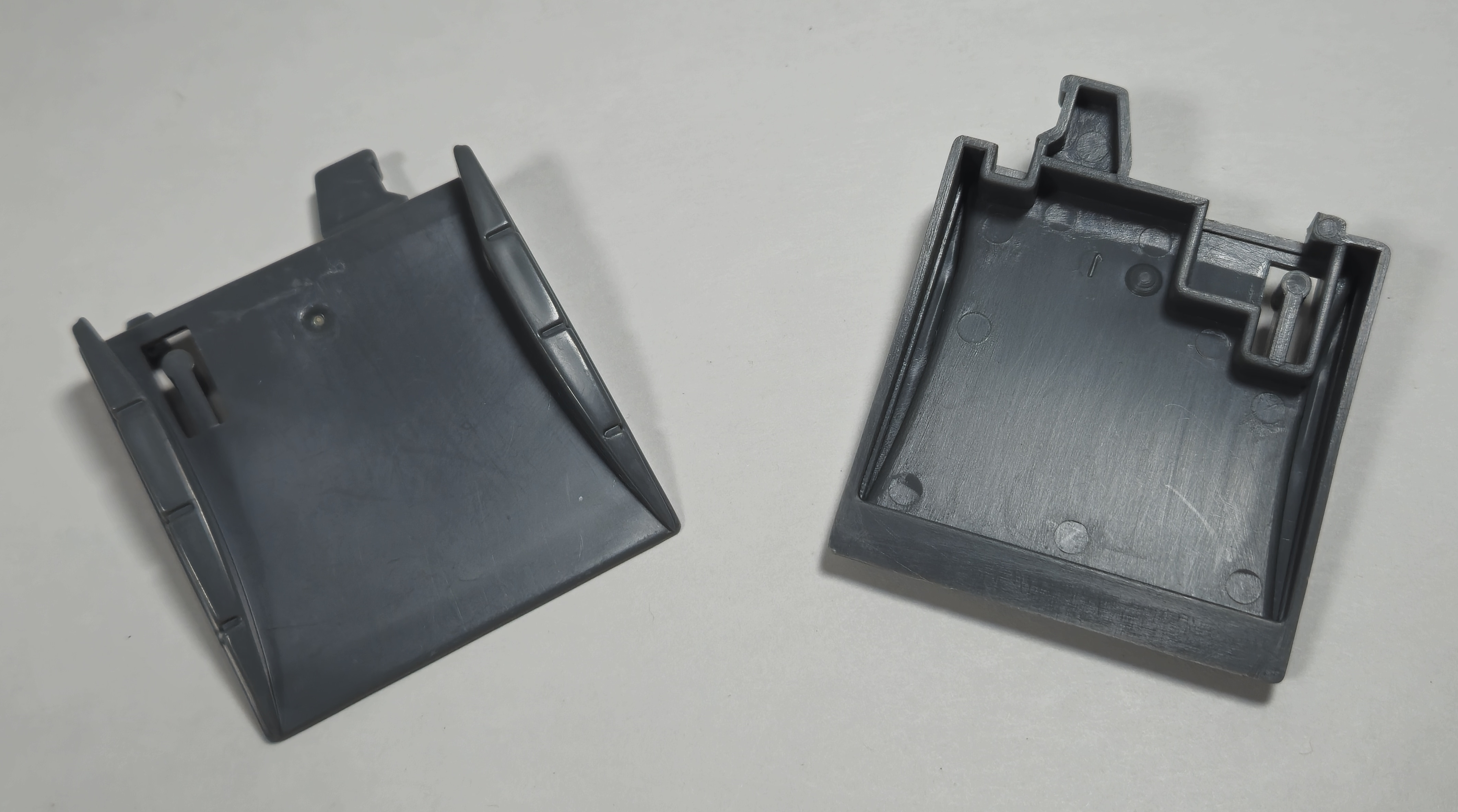
These Ts made it into several sets because they are much easier to incorporate into a relatively small but still interesting road layout than the four-way junction and with three added road curves two Ts can be used as reversers at either end of a stretch of road.
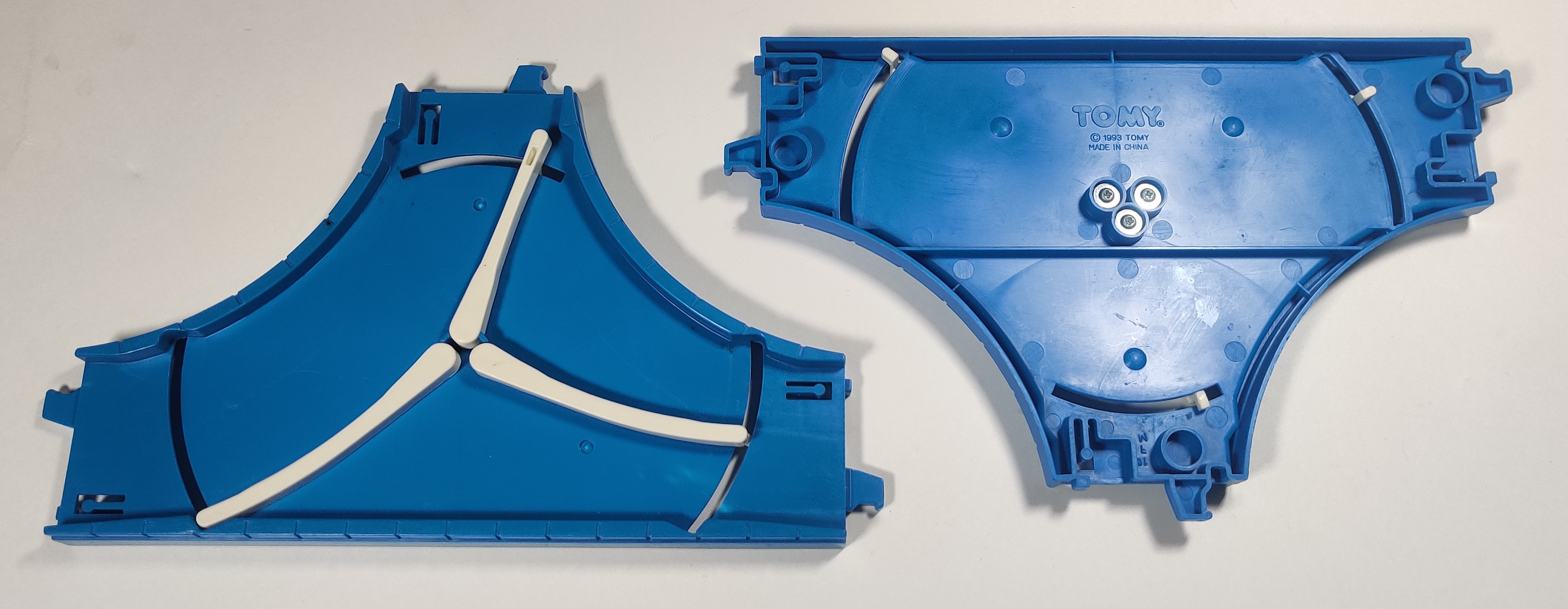
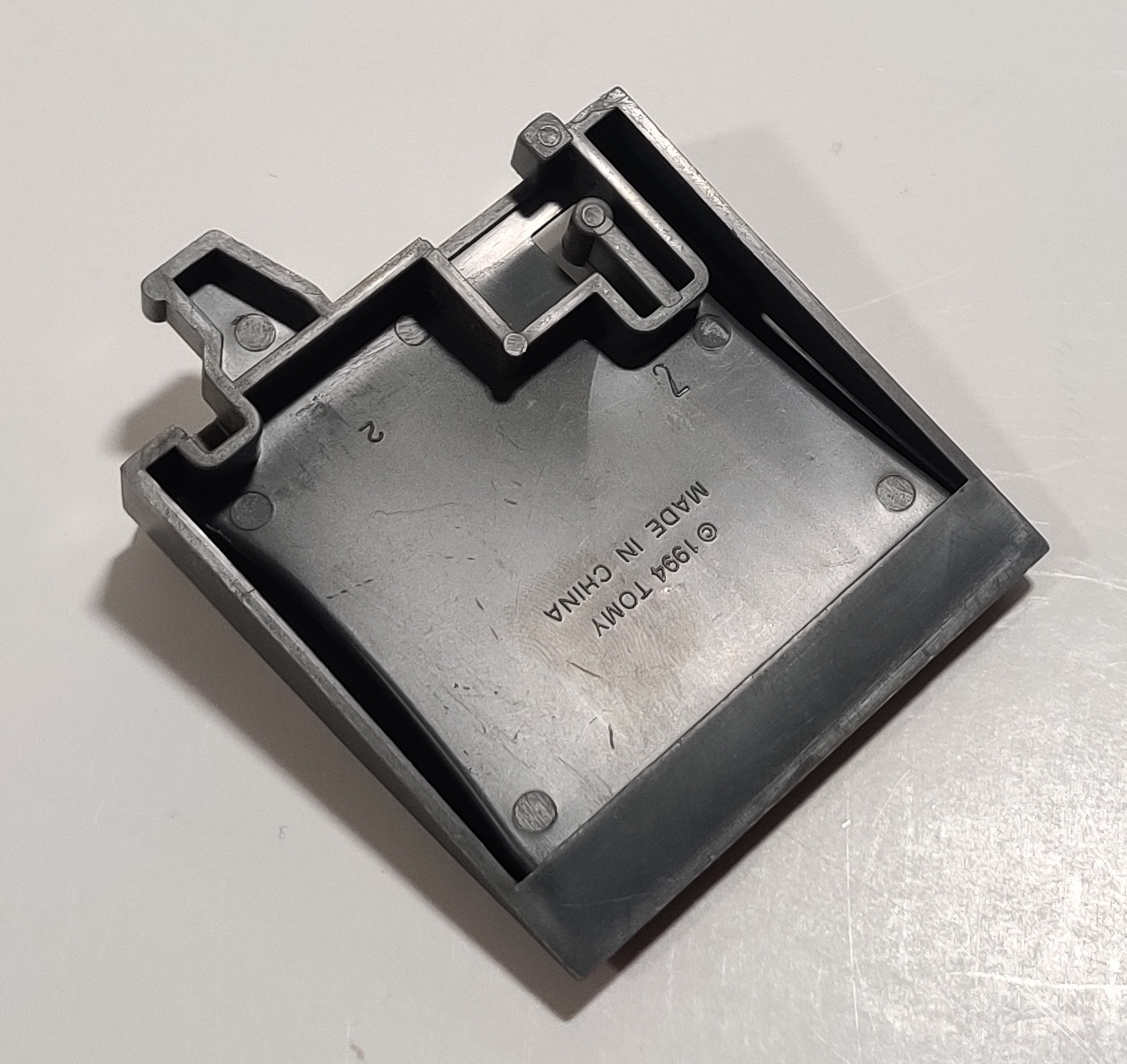
Around 1996 when Tomy moved the rest of B/O Tomica production out of Japan and the range was rereleased as Motor Tomica in 1997 the intersections began being produced in China.
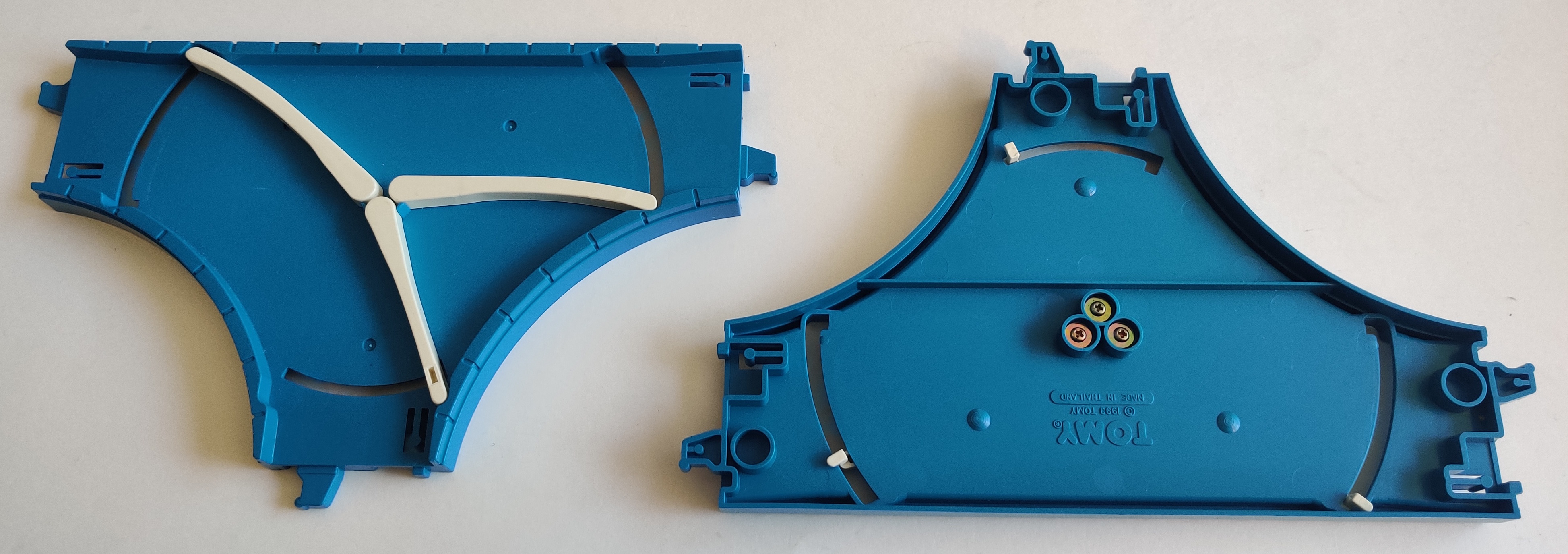
In the early 2000s production of the intersections moved to Thailand.
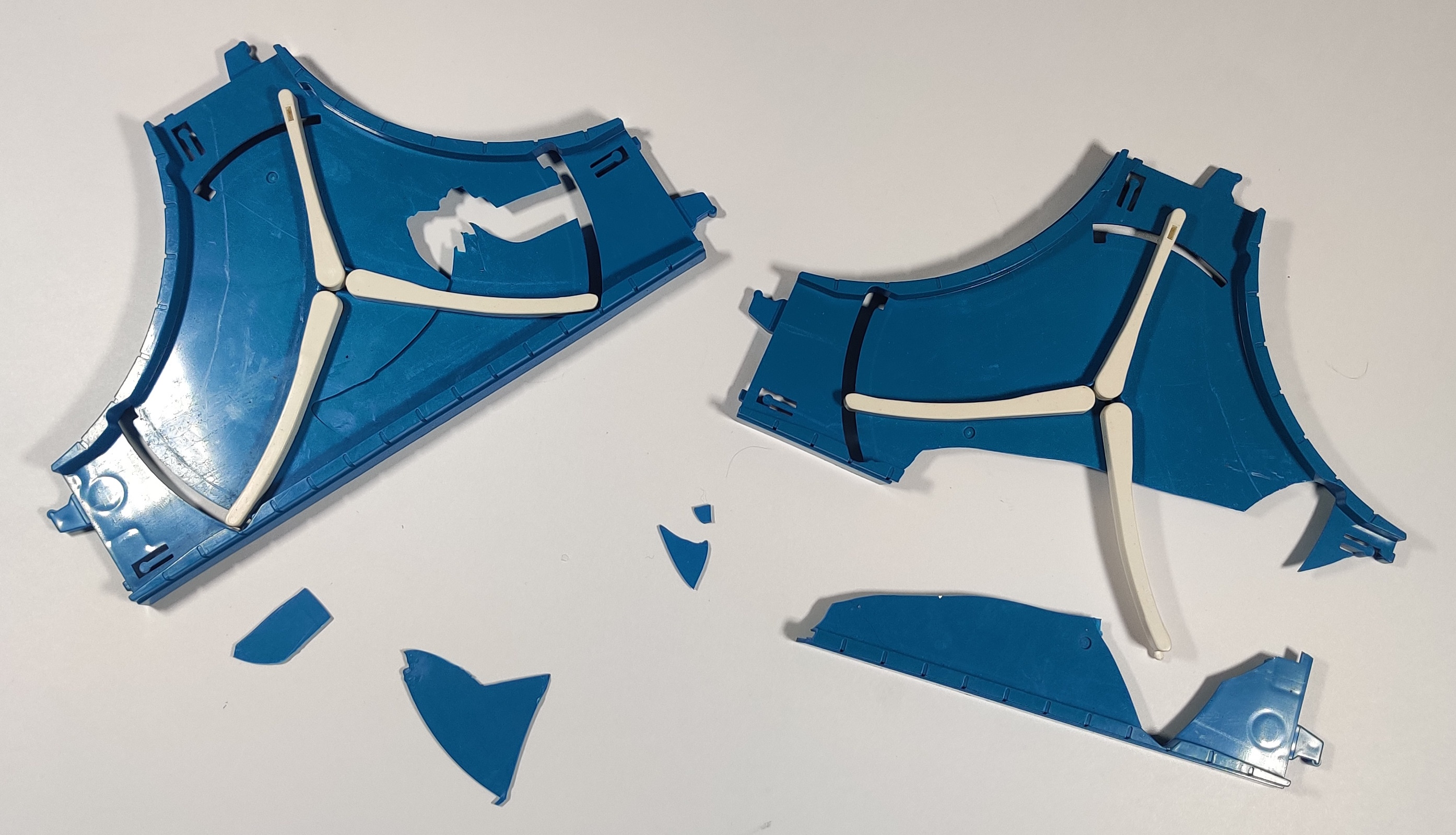
The plastic mix used in these intersections yellows and becomes brittle with time, and this era of intersection is often found broken.
7519 T-Junction (Tomica World) (1998)
The T intersection with ramp was also released as part of the Tomica World range in 1998. Tomica World intersections were first the China-produced type and later the yellowing Thailand type.
D-07 T Road with One Ramp (D-05 T字路 (スロープ どうろ1本付)) (2004/2005)
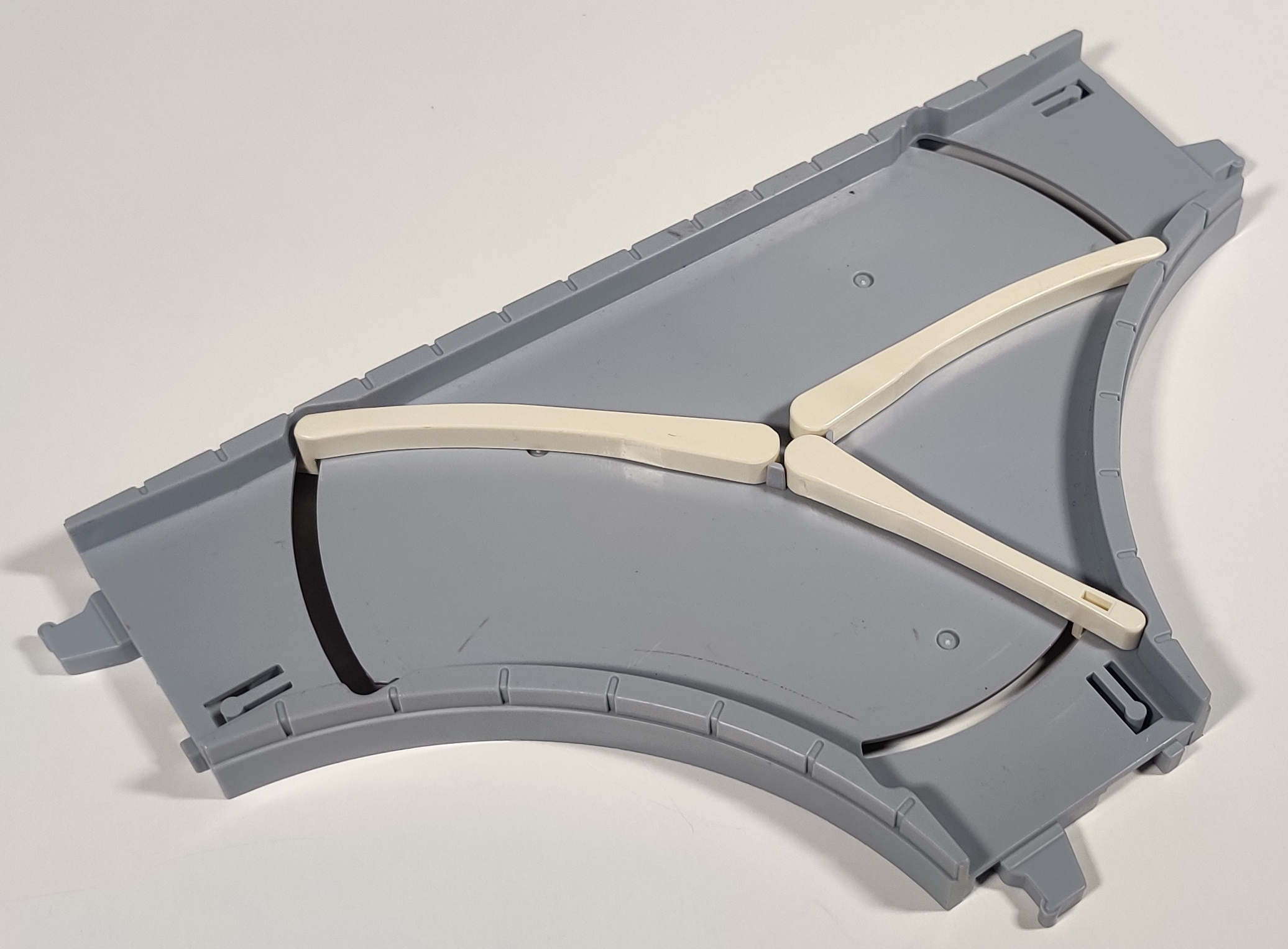
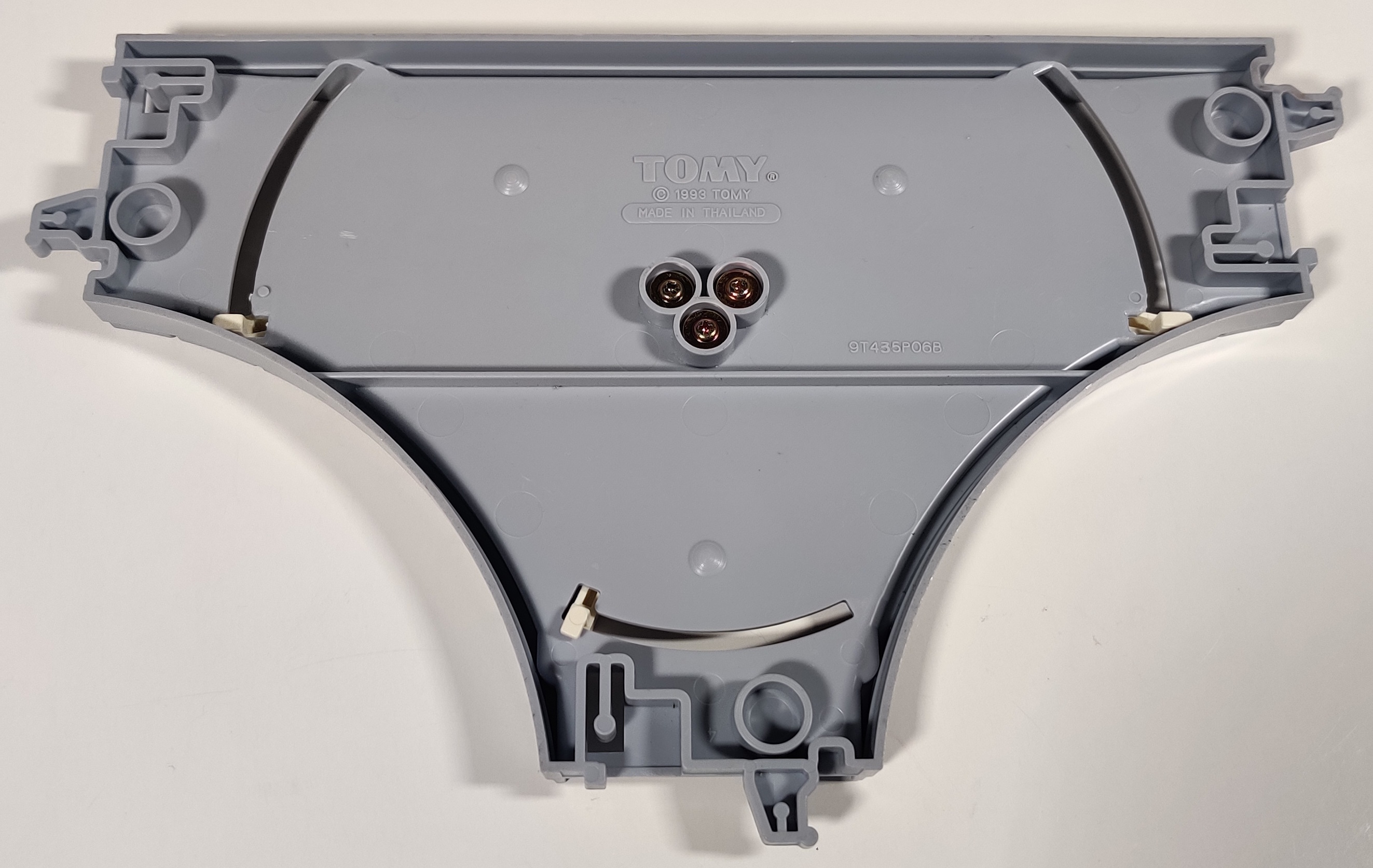
Included in some Plaroad sets in 2004, in 2005 the T junction with ramp was rereleased individually with a matching light grey ramp and the new number D-07.
D-06 Slope Road (D-06 坂スロープ) (1993)
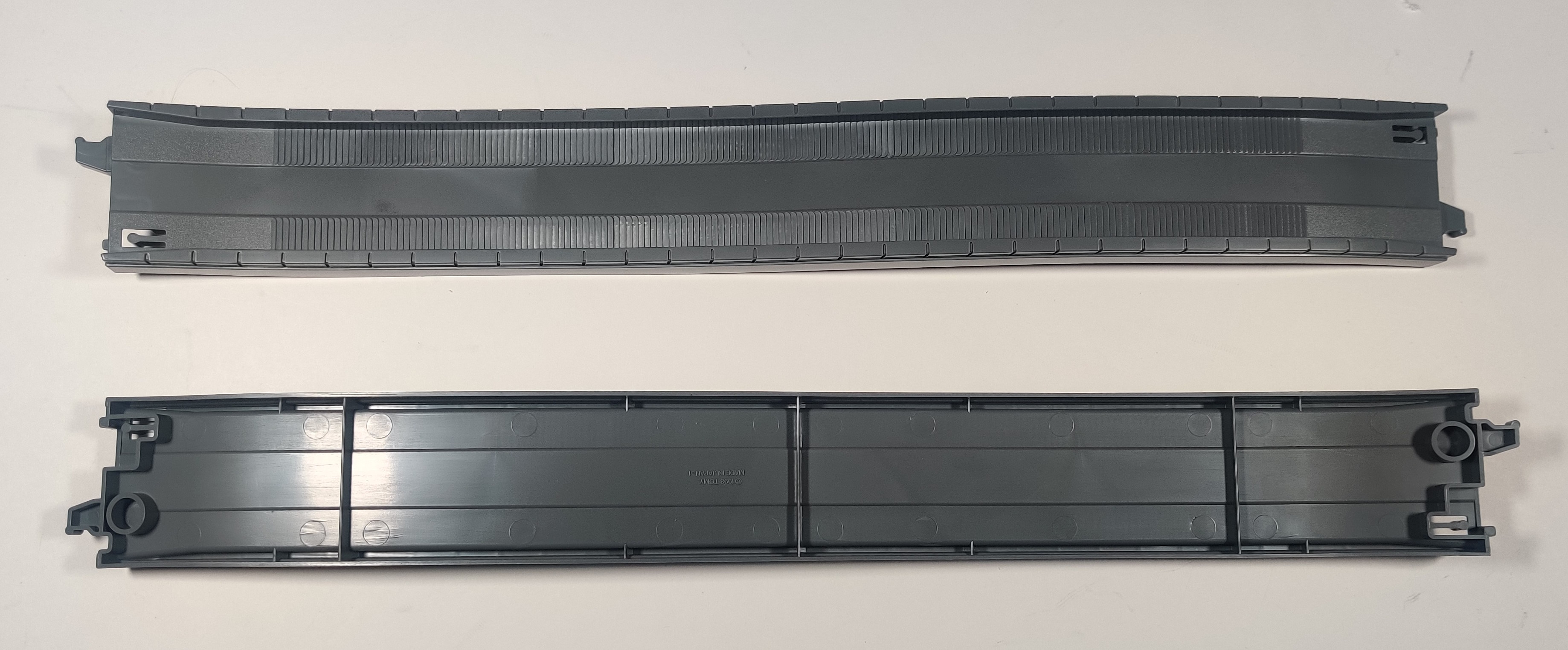

Motor Tomica slope road measures two straights long, the same as Plarail slope rail, and have treads to help the wheels grip and make it up the incline.
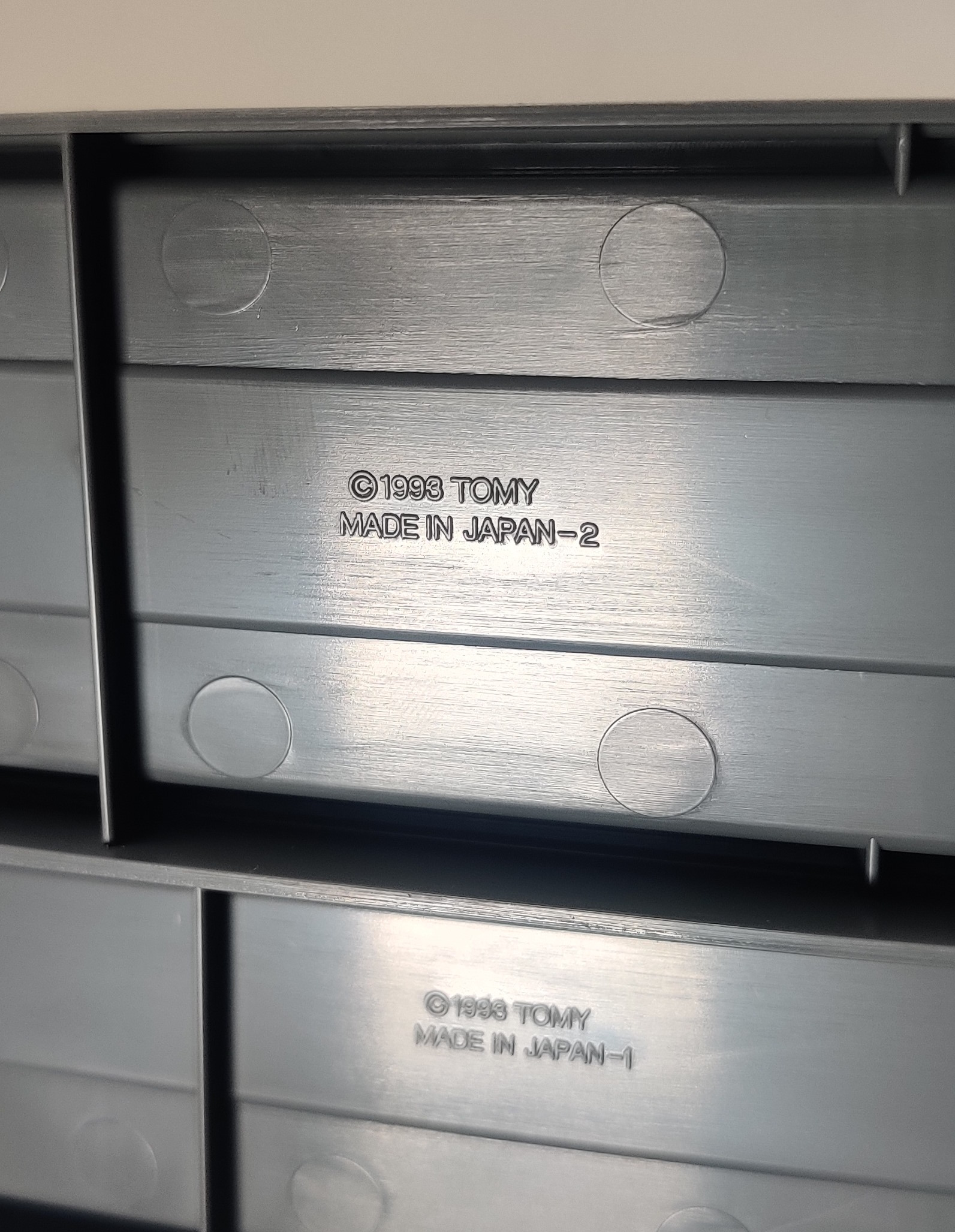
The underside of early examples is marked made in Japan with a slot number afterwards.
A variant of the sloping road with integrated support that forms an archway underneath was included in some early B/O Tomica sets.
7523 Sloping Road (Tomica World) (1998)
Two sloping roads were also released for the Tomica World range in 1998.
D-04 Slope Road (D-04 坂どうろ (2本入・ どうろ橋脚2個付)) (2004)
Two light grey Plaroad slope roads with two orange cross-compatible piers.
D-07 Pier (D-07 橋脚) (1993)
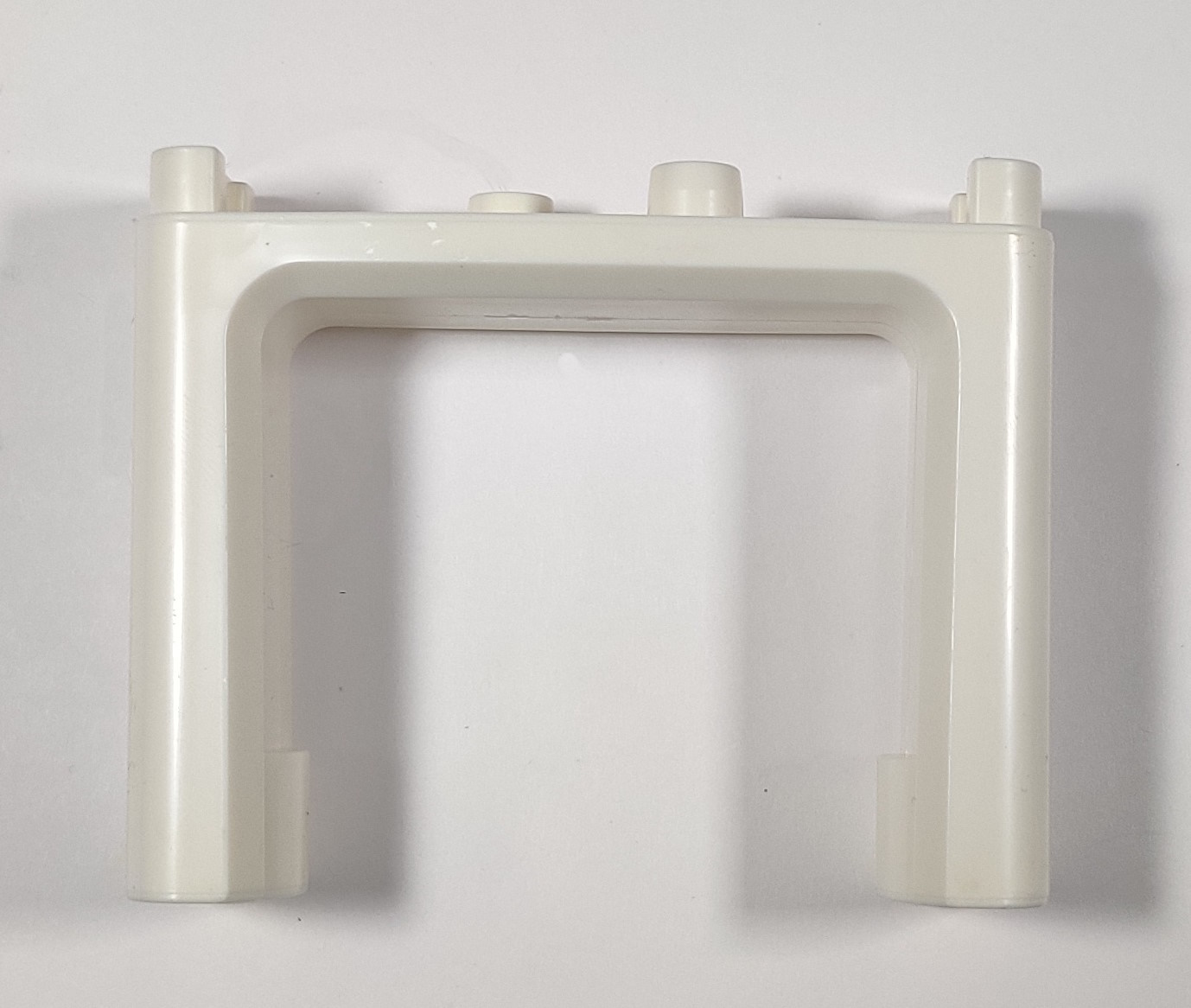
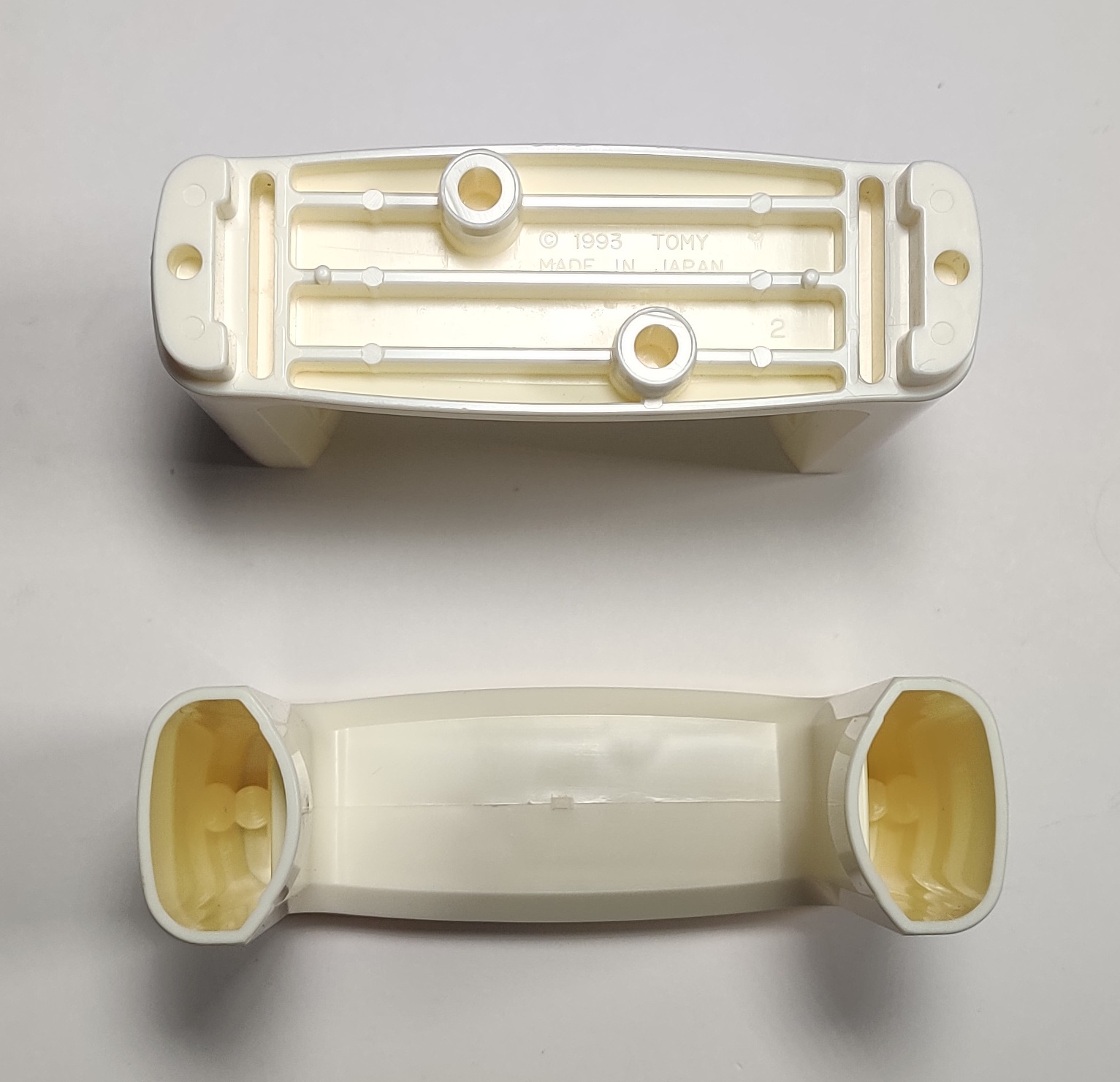
White stacking pier with round protrusions to fit into the underside of road sections. Some Motor Tomica accessories have similar stacking features to allow the piers to be further stacked on top of them.
This system is not directly compatible with the Plarail Block Bridge Girder system although there was a series of piers developed for the large early 2000s suspension bridge that worked with the block girder system but could support road or rail. It also works with some accessories like the D-09 Tunnel.
7515 Road Girder (Tomica World) (1998)
Six white road girders were released for the Tomica World range in 1998.
D-05 Road Bridge Pier (D-05 どうろ橋脚) (2004)
In 2004 an updated style of support girder that worked with both Plarail rail and Motor Tomica/Plaroad road as well as stack with Plarail J-14 Block Bridge Girder and J-15 Mini Bridge Pier.
D-15 1/4 Straight Road (D-15 直線どうろ) (1997)
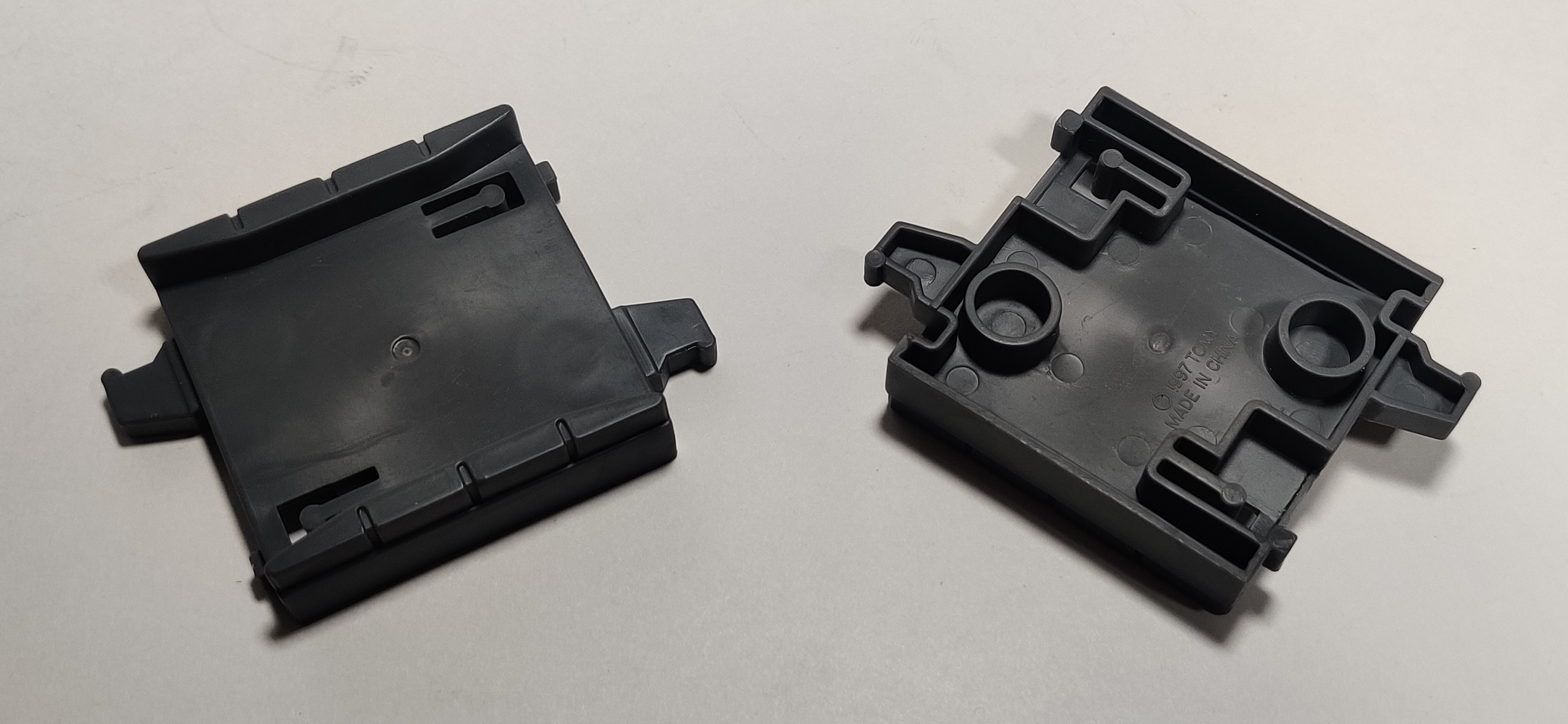
New for 1997 were 1/4 length straight road pieces sold in a pack of 12, bringing more complexity to the Motor Tomica system. These road pieces are needed to use some of the new-for-1997 accessories with the Plarail system to their fullest ability. Like many other new-for-1997 Motor Tomica items, they were first produced in China. They measure about 53mm long.
7525 Quarter Straight Road (Tomica World) (2000)
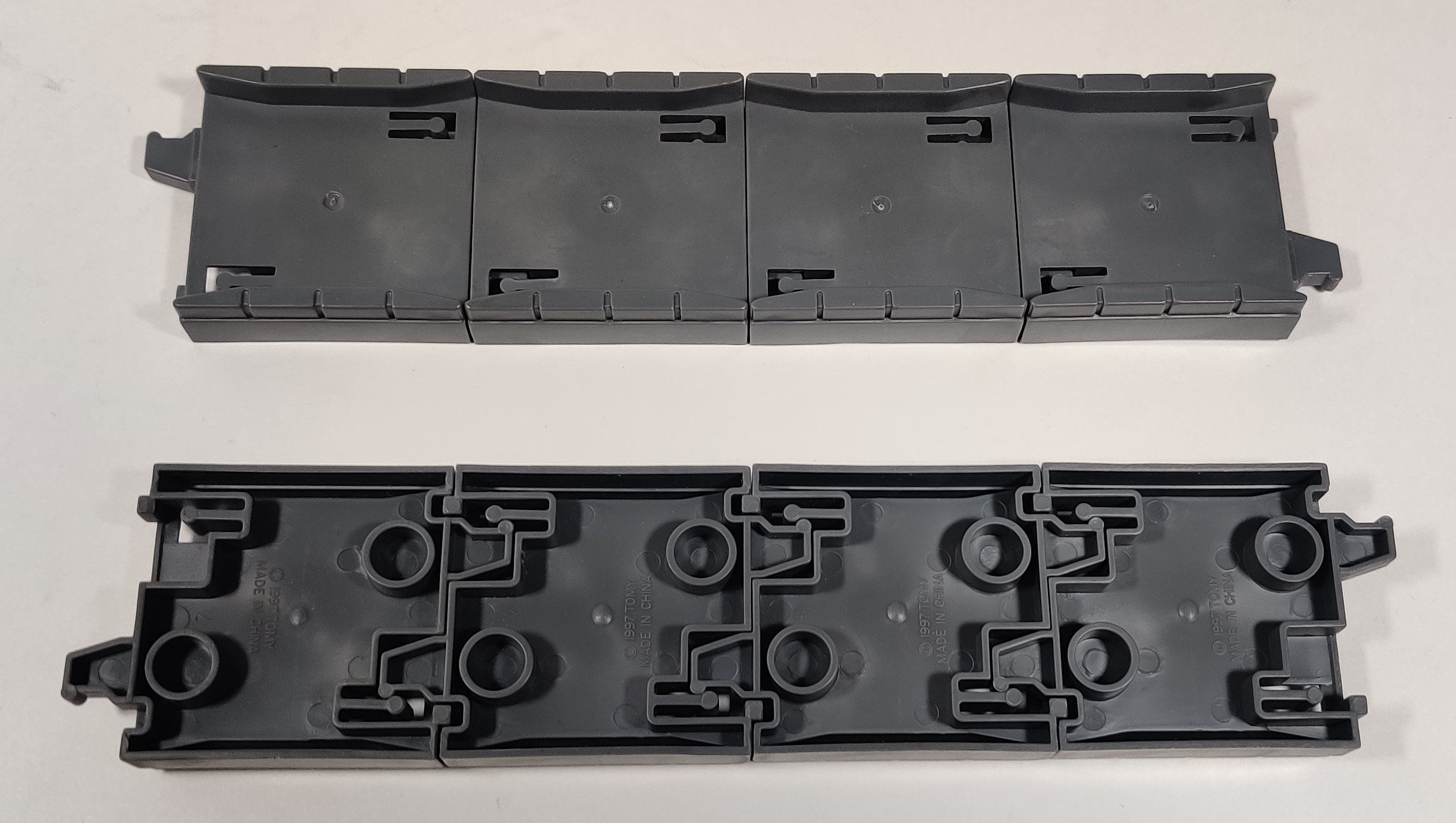
Available first through the U.K. Tomy Careline phone service and later individually in both 2000 style Tomica World and later Thomas Motor Road & Rail packaging were a pack of eight quarter straight road sections.
D-06 1/4 Straight Road (D-06 直線どうろ) (2004)
12 quarter straight roads were released in Plaroad light grey in 2004.
"Grooved" road (set exclusive)
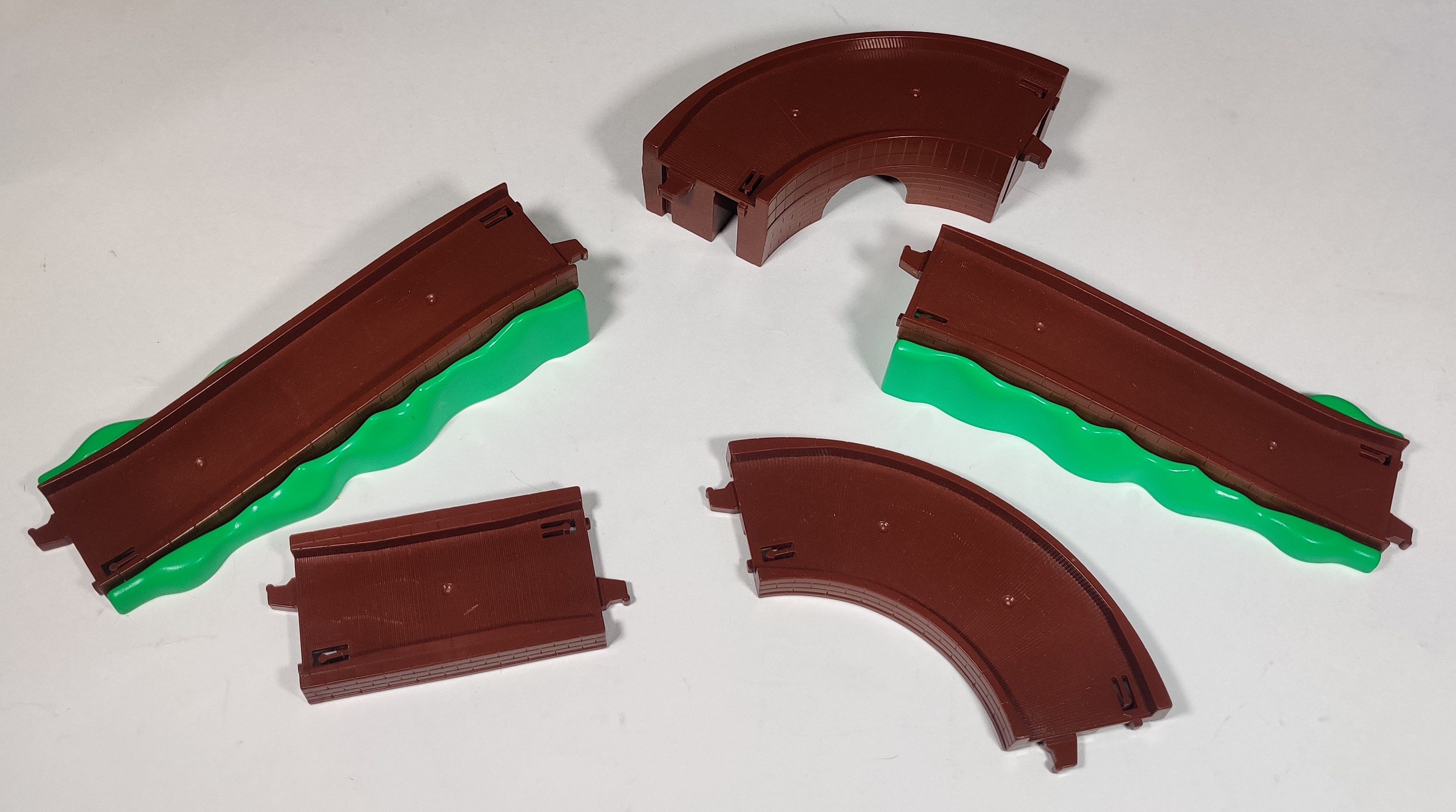
First used in brown in the 2002 Thomas and Terence Loading and Unloading Set and its exports and later in grey in the 2003 Thomas and Elizabeth Railroad Crossing Station Set, this set of five road pieces (two slopes, a half straight, a curve, and an elevated curve) use unique toolings with completely treaded surfaces, with the elevated rails coming up to a nonstandard height (related to the large orange loading section in the Thomas and Terence set). The Elizabeth Station Crossing Set box calls some of these sections "Grooved" road.
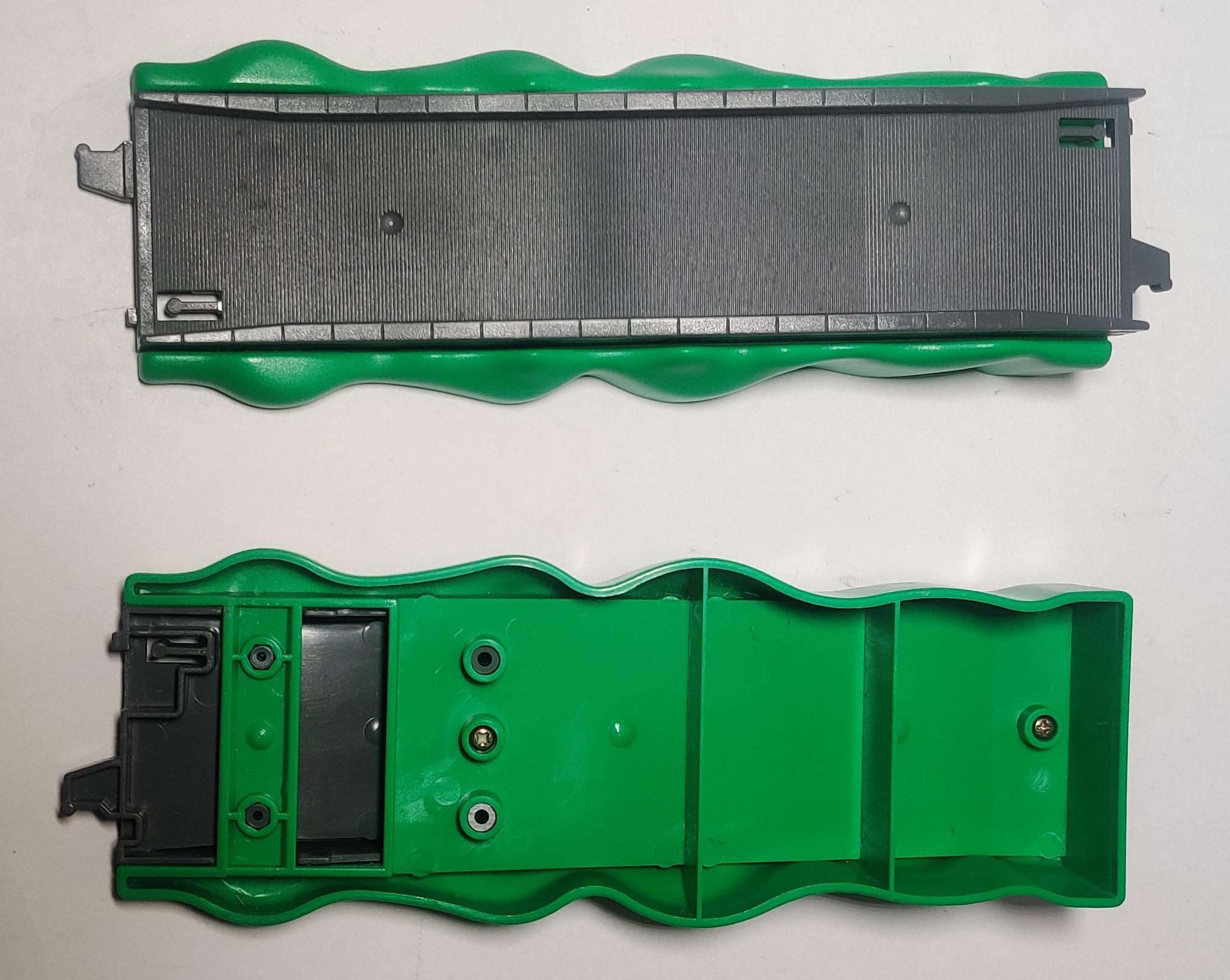
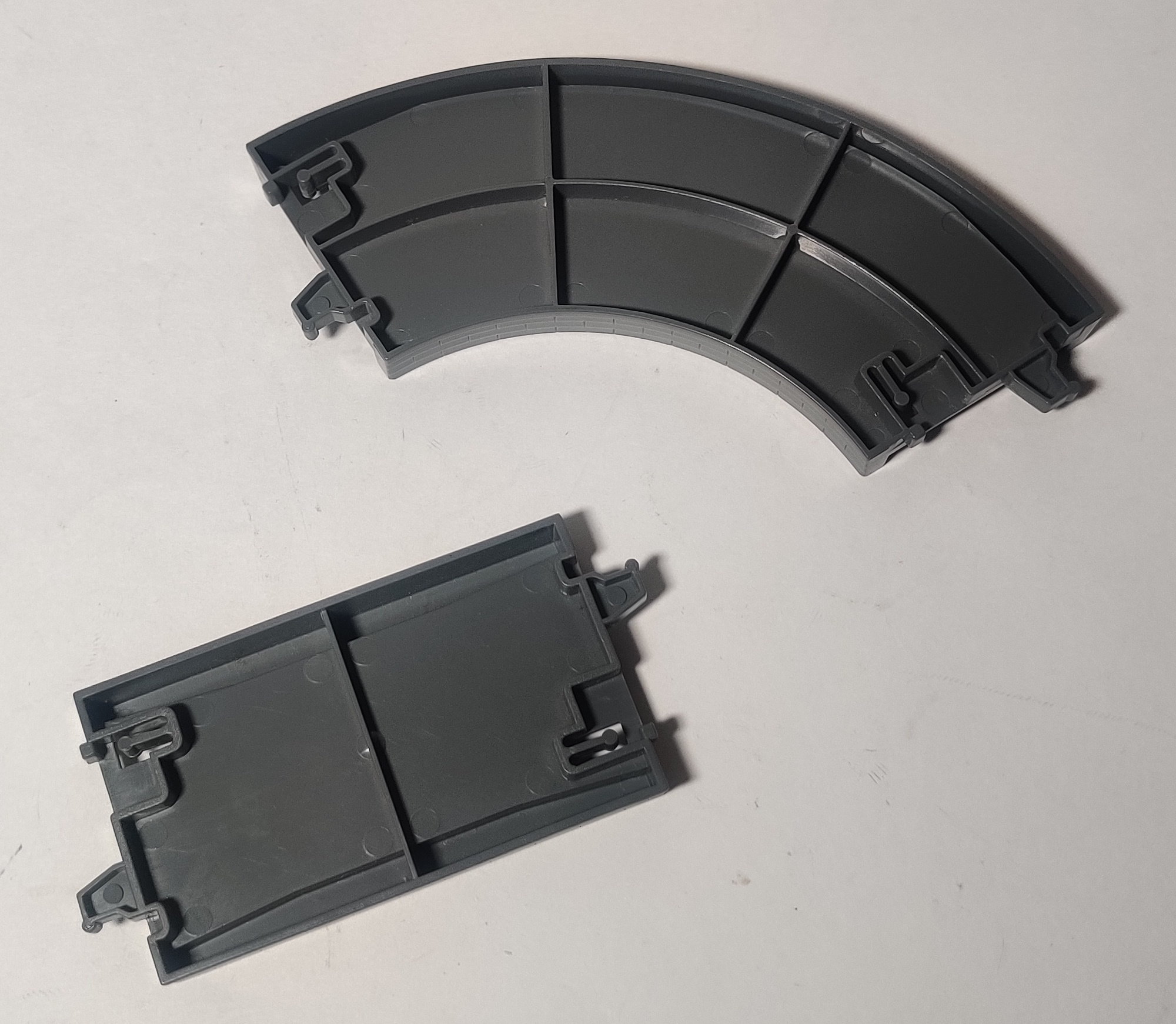
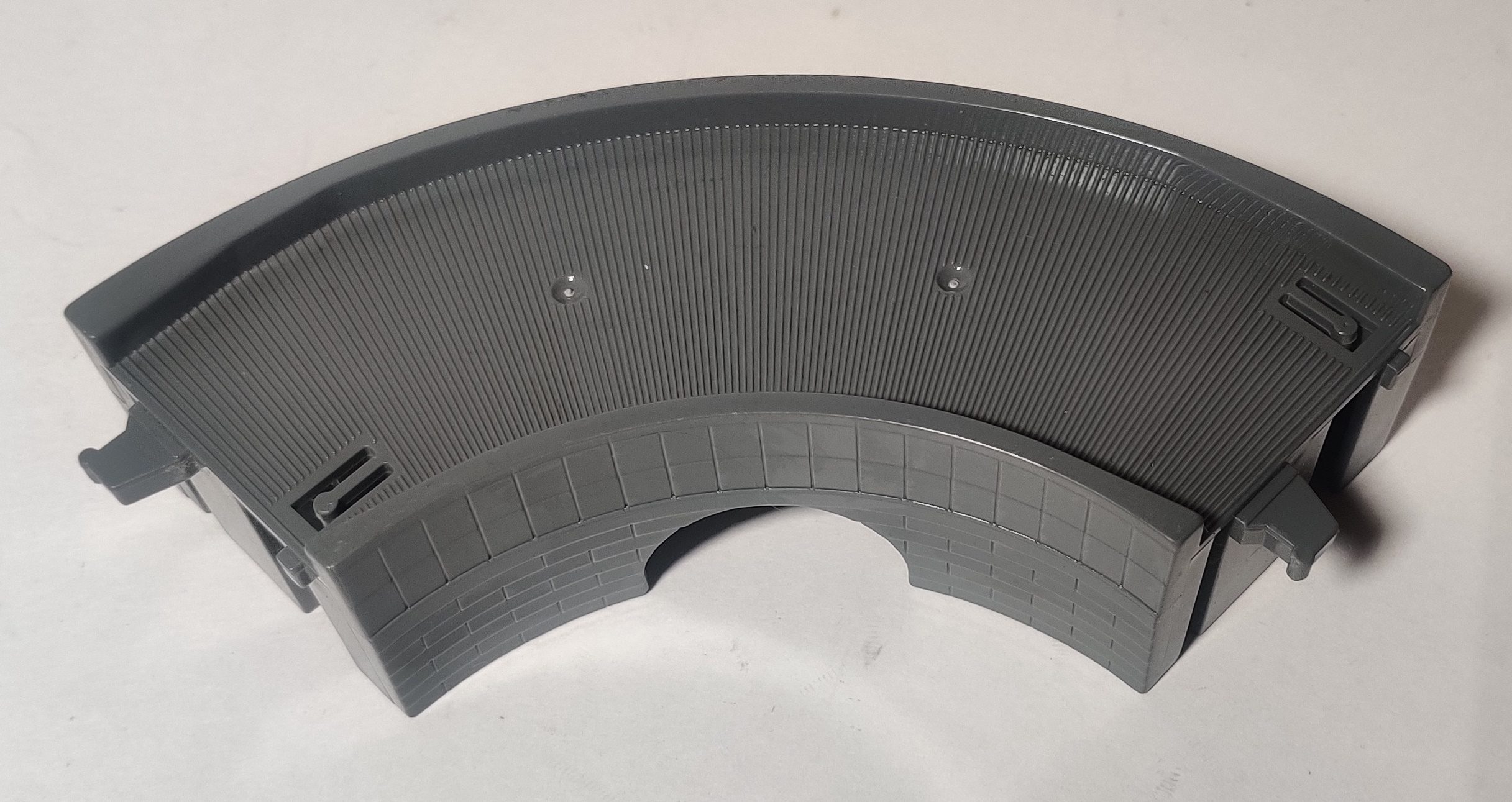
These pieces can be used with regular Motor Tomica road (although the hills and elevated curve are best used together) although they are produced from a less flexible type of plastic and with age are prone to having their connection tabs break off.
